Discover the power of Janitor AI on Reddit Management
Today on this forum in the AI age we try to understand legal implications and other aspects with you on the topic "Janitor AI on Reddit". Although Janitor AI has started to be used on the Reddit platform so let's talk about its uses and limitations- The same conversation is happening and as a result everyone is trying to know in detail about the topic of "Janitor AI on Reddit".
In this article we want to discuss and dialogue with you about NSFW Content must be tagged, Community standards, Reverse Proxy, Be respectful to others, No advertising, spam or self-promotion, Social media, You must be over the age of 18. Currently there are many AI and social platforms but among them Reddit and Janitor AI have become very popular. Without delay I begin the discussion of the legal factors contributing to their rise in popularity.

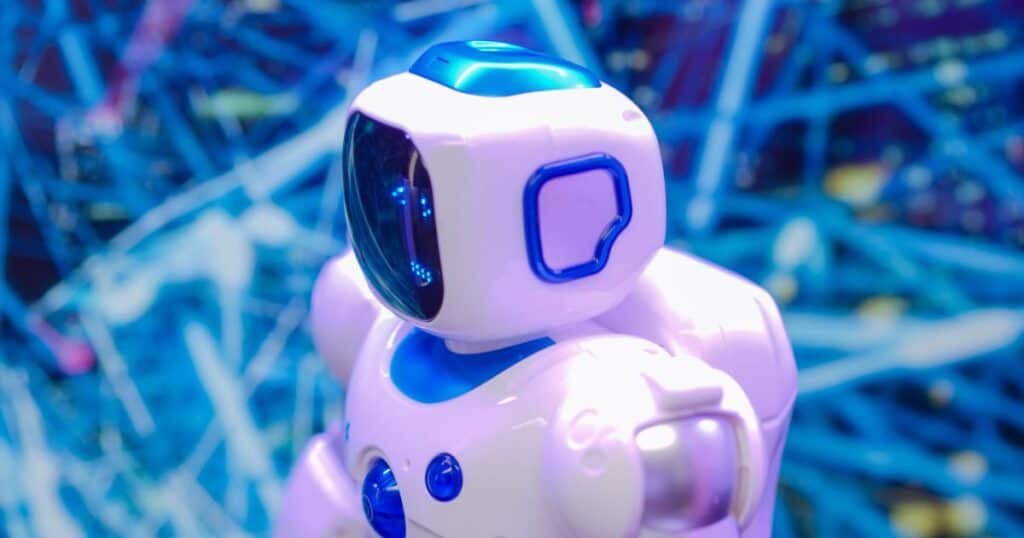
I have discussed with you NSFW Content must be tagged, Community standards, Reverse Proxy, Be respectful to others, No advertising, spam or self-promotion, Social media, You must be over the age of 18 above mentioned "Jenitor AI on Reddit" topic related chapters. I believe it will add to the community and be useful to you about the topic. Janitor AI and Reddit have strengthened their internal systems by carefully managing technology to provide the best experience for their users. Even if a person under the age of 18 uses, identifying such a minor prevents him or her from using. And also indirectly inhibits the consumption of energy.
I want to let my readers know that if you or your acquaintances need detailed information or solution related to the subject, you can contact us without any hesitation or insecurity, we will be happy to assist you.
“Join the debate! Reddit, a platform for both seasoned Redditor and curious newcomer, recognizes the importance of providing valuable insights to enhance community cleanliness and productivity
Janitor AI vs. Open AI today I when thinking of the word AI, the concept of open AI versus revolutionary generative AI comes to mind. ChatGPT is also a much talked about concept in the world of AI. Janitor AI and Open AI are popular inventions in the world of artificial intelligence. Janitor AI and Open AI have different features, and Janitor AI and OpenAI have different uses. Are you aware from what is Janitor ai?
Both Janitor AI and Open AI have different meanings. The invention of artificial intelligence has brought about a radical change in the way every human being lives and works. In today's article I would like to discuss with you the topic of Janitor AI VS Open AI. I would like to draw your attention to the legal aspects of Janitor AI VS Open AI.
If you need detailed information about the legal aspects of Janitor AI then you can contact us. And can increase your legal understanding and awareness of Janitor AI and Open AI. Let's start the topic discussion with you. I hope this article will be useful and helpful to you.
" Also Read-https://askbylaw.com/Catagory/what-is-an-ai-trade-secrets/"
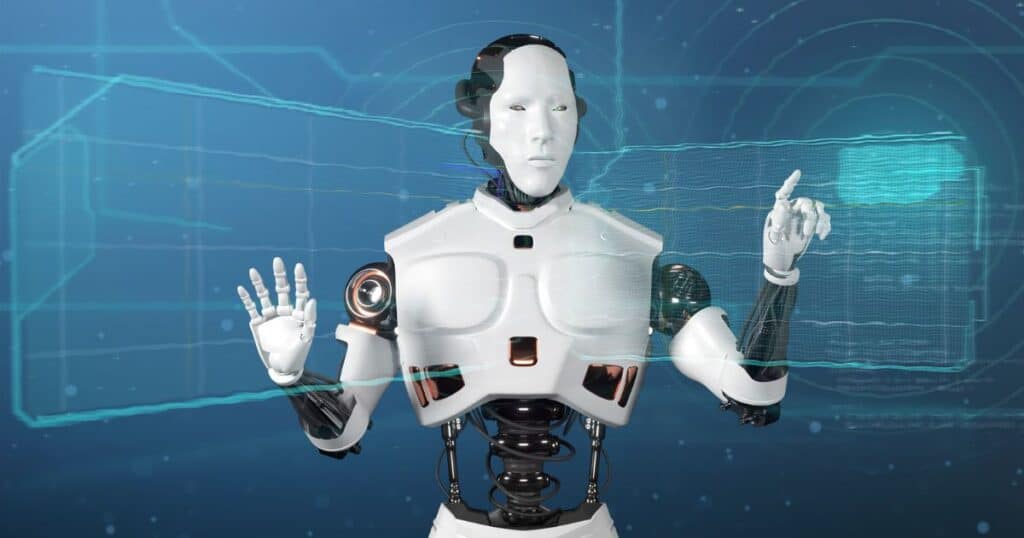
Also Read- https://askbylaw.com/Catagory/what-is-an-ai-law-a-1/
| FEATURES | JANITOR AI | OPEN AI |
| Legal Knowledge base | Legal awareness, accessibility and IP support | General-Purpose artificial intelligence and research with development |
| Legal Services | Legal research assistance and contract review guidance and IP registration support, Legal education modules. | Not exclusive design for legal Services need |
| Cost | Freemium model with basic features and paid plans for additional functionalities | Free version for limited futures and Pay-as-you go pricing based on usage |
| Data Security | Focus on data privacy and security | Adheres to general data security and practices |
| Targeted Audience | Individual, Small businesses, Eucational institutes and professionals | Researcher and developers, businesses for various application |
| Tailored for legal needs | Janitor Ai excels in providing legal information and resources. Its knowledge base is specifically designed for legal concepts, making it easier to navigate complex legal topic. | -OpenAI is a much broader AI Platform offering capabilities beyond the legal domain. it can be use various task like creative writing, code generation, and also scientific research. -OpenAI provide a wider range of advanced featured like text-to-code generation and large language models, appealing to developers and researchers. -OpenAi allows for more customisation in terms of model selection and programing application |

| Janitor AI | Open AI | |
| Data Privacy and Security | Data Collection and Use: Janitor AI collects user data for Service improvement, Personalisation, and analytics, Its important to review their privacy policy to understand what data is collected and how it use. User consent: They must ensure that users are informed and consent to data collection especially sensitive data in compliance with GDPR or CCPA if applicable. Data Security: The company can implement robust security measures to protect user data from branches and authorised access | Data Collection and Use: OpenAI collects user data to enhance its models and services. Their privacy policy outlines the types of data collection and its usage. User consent: OpenAI is committed to obtaining user consent for data collection, adhering to GDPR and other policy laws. Data Security: OpenAI employs advanced security protocols to safeguard user data, focusing on preventing data branches and unauthorised access. |
| Intellectual Property (IP) | User-Generated Content: Janitor Ai must clarify ownership rights over user-generated content and IP rights the company may claim. Third-party Content: Ensure that any third-party content used within the platform complies with licencing agreements and IP law. | Model Output: OpenAI’s policies address the ownership of content generated by its AI models, stating that users generally own the outputs they generate. Licencing: OpenAI adheres to strict licencing agreements for the use within the platform complies with licencing agreements and IP laws. |
| Liability and Compliance | Legal Liabilities: Janitor AI should outline the extent of its liability for errors, data loss, and misuse of the services in its terms of service. Regulatory compliances: Must comply with relevant regulations, sch as GDPR for data protection, and industry-specific laws if applicable. | Legal Liabilities: OpenAI provided detailed terms of service that limit its liability and specify the conditions under which the service is provided. Regulatory compliances: OpenAI adheres to global regulation including GDPR and CCPA. Ensuring compliance with data protection and privacy laws. |
| Ethical Considerations | AI Ethics: Janitor AI should implement ethical guidelines for AI use focusing on preventing bias, discrimination and misuse. Transparency: Ensure transparency in AI decision-Making processes and provide users with explanation of how the AI operates. | AI Ethics: OpenAi is committed to ethical AI development actively researching and addressing issues of bias, discrimination and misuse. Transparency: OpenAI promotes transparency in its operations and AI models providing extensive documentation and research findings to the public. |
| User Rights and Access | Right to access and delete data: Users should have the right to access their data and request to dilatation in accordance with privacy of law. Transparency: Clear communication about users rights and how to exercise them is crucial. | Right to access and delete data: OpenAI respects users rights to access and delete personal data providing clear procedures for such requests. Transparency: OpenAI ensures users are informed about their rights and the process to manage their rights |

Modern technologies are actively used in healthcare facilities in order to provide high hygiene standards and operational efficiency. Janitor AI, an artificial intelligence system for healthcare sanitation, represents the next generation of cleaning technology.
Machine learning algorithms allow assessing the level of cleanliness; making predictions about when equipment needs to be maintained or replaced, learn from the accumulated data, etc.
The Janitorial AI system ensures compliance with hygiene standards, as well as increases patient safety and satisfaction. Janitor AI is used by leading healthcare organizations and cleaning service providers.
The Janitorial AI solution allows you to confidently trust your patient and operational data to us Janitor AI clean-rooms without storing personal patient information and works with your infrastructure.
Thus providing operational efficiency and safety without violating HIPAA
Tomorrow's artificial intelligence will come fast. Janitor AI and OpenAI are paving the way, but in different ways. OpenAI continues to raise the bar with very practical models like GPT-4, versatile, deep and powerful for a wide spectrum of deep learning and applications.
Janitor AI, on the other hand, is your one-stop shop specializing in powerful yet practical and less expensive AI. A special one. Custom made. Industry requirements. Companies leveraging Janitor AI are looking for automation tools that fit their core activities and save time and money without the need to invest in more generic and expensive AI platforms.
Over time, the combination of both AI forces could prove very powerful at the enterprise level. On the one hand, high-level innovation with Open AI and on the other, applied innovation with Janitor AI that adds value through its practical models. A mutual benefit that raises the threshold of convenience and security of AI implementation. This should make digital transformation easier and more sustainable for any business anywhere.
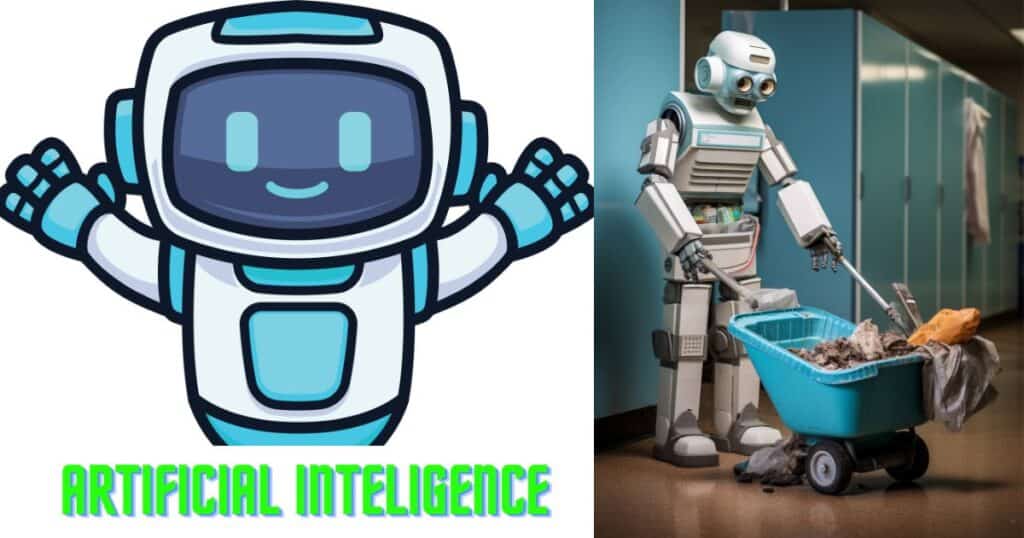
We discuss with you and go through final concusion at the topic "Janitor AI vs. Open AI" Today i discussed with you on the topic of (Janitor AI vs. Open AI) Janitor AI, a platform using Open AI LLM (Large Language Model) technology, automates janitorial tasks using its NLP (Natural Language Processing Expertise) on Reddit.
Despite potential bugs, the platform offers a free solution for exploring AI-generated content, despite occasional poetic or "horny" characters. See again. Open AI with its established presence offers a malleable experience with AI models like GPT-3.5. Its services are accessible through credits and a free $5 credit for new users, and it introduces "Janitor AI" for factual accuracy.
Remember. (Janitor AI vs. Open AI) offers a free option for AI enthusiasts seeking a nuanced experience, making it a solid choice for those seeking a more comprehensive Artificial Intelligence solution.
If you burning desire to have a detailed discussion on the legal issues of (Janitor AI vs. Open AI) then send us your comments in the comment box of this article and we will be happy to discuss with you, drop comment and update yourself today.
AI trade secrets are a hotly debated topic and can also be called a solution to an emerging need. By checking the SWOT analysis and cost-benefit ratio of AI, it can be known that, shortly, we will understand the performance, future, uses, and limitations of this artificial intelligence (AI) and its commercial use in business. It can be said that the rate of progress will increase. Computer science has made unlimited inventions. It is necessary to evaluate, from a legal point of view, whether this invention of AI will help every small business grow. Connect with us to understand more about AI trade secrets.
- Information must have commercial value to qualify as a trade secret. Because it is kept secret, and this means that the information provides the holder with a competitive advantage.
Trade secrets should be known only to a limited group of people, keeping business information confidential ensures that competitors cannot Gain access to it.
The rightful holder of information should take reasonable steps to maintain confidentiality, such measures may include the use of confidentiality agreements with business partners and employees.
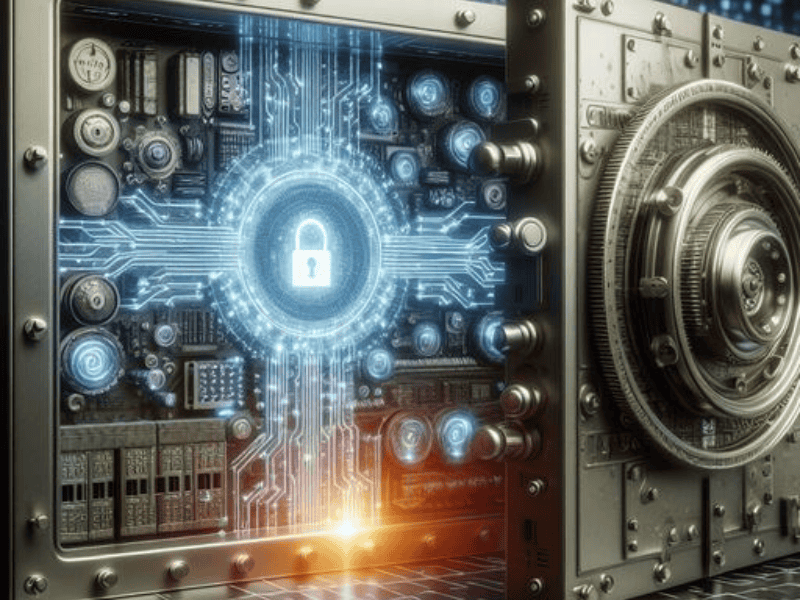
Recently, artificial intelligence systems span various domains, revolutionizing how we approach tasks previously handled by humans. From artistic endeavors to financial transactions, the impact of AI is undeniable. However, this technological leap forward also raises concerns. How can we ensure that artificial intelligence works diligently and safely?
The European Union's Artificial Intelligence Act (AIA) aims to address these challenges by emphasizing human-centric, trustworthy, and ethical AI systems for European markets. In today's article, we have tried to do a thorough analysis of AI with you.
In today's article, we explore the delicate balance between disclosure obligations and trade secret protection in the context of AI. While the technical details of artificial intelligence (AI) often contain information not verified for trade secret protection, exceptions to artificial intelligence also exist. We are navigating together the access and privacy of the AI trade secret through this article, and we explore the tension between protecting critical AI insights and trade secrets. Feel free to take the initiative by commenting on the article or let us know if you want to engage more deeply. Do you know what the future of AI is?
Let’s delve into the world of trade secrets and their significance in the realm of intellectual property.
A trade secret is a form of intellectual property (IP) that revolves around confidential information. Unlike other registered IP rights, trade secrets are not publicly disclosed. Instead, their owners safeguard this valuable information from competitors by implementing special procedures and both technological and legal security measures.
For information to qualify as a trade secret, it must meet the following criteria:
The information is valuable because it is secret.
Only a restricted group of individuals knows about it.
The rightful holder takes reasonable steps to keep it confidential, including using confidentiality agreements with business partners and employees.
In the previous paragraph, we tried to find out what AI trade secret?. Now let us try to know about trade Secret versus other intellectual property Let’s compare trade secrets with forms of IP:
Patents protect inventions and grant exclusive rights for a specified period. However, patents require full disclosure, whereas trade secrets remain undisclosed.
Copyrights safeguard creative works (e.g., literature, music software). Unlike trade secrets, copyrights are publicly registered.
Trademarks protect brand names, logos, and symbols. They are publicly registered, whereas trade secrets remain confidential.
Trade secrets encompass confidential information (e.g., formulas, know-how) that provides a competitive edge. They are not recorded with authorities but are crucial components of IP portfolios.
In the field of artificial intelligence (AI) @ Machine learning, trade secrets play a pivotal role. Companies often guard their proprietary algorithms, training methodologies, and unique data processing techniques as trade secrets.
By doing so, they maintain a competitive advantage without revealing their inner workings to the public. These undisclosed AI trade secrets contribute significantly to innovation and technological advancements.
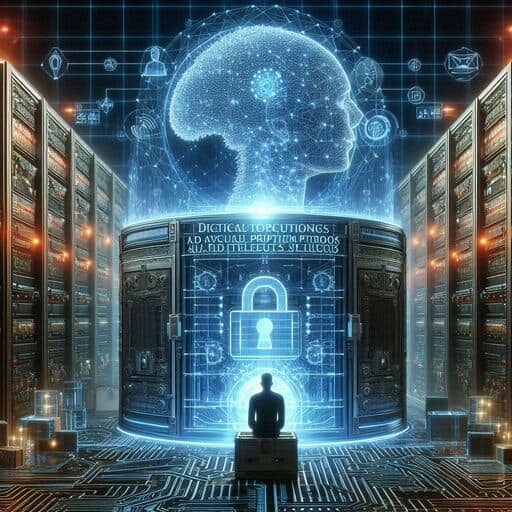
In the previous first paragraph, we tried to know what is an AI trade secret? And in the second paragraph, we tried to learn about the sense of AI trading secrets. Now in the third paragraph, let us explore the fascinating world of AI trade secrets and how they can be effectively protected.
AI-generated information and related components can indeed qualify as trade secrets. Here’s what can be protected:
The intricate sets of rules or instructions that AI systems use for data analysis or problem-solving can be safeguarded as trade secrets1. These algorithms often form the backbone of AI applications.
The data used to train AI models, whether supervised or unsupervised, can be considered a trade secret. These datasets are valuable and unique to each organization.
Aggregated data, patterns, and compilations used in AI processes can also fall under trade secret protection.
Proprietary code that powers AI systems can be kept confidential as a trade secret.
Identifying valuable AI trade secrets involves considering the following factors:
Trade secrets must have independent economic value due to their confidentiality. If the information provides a competitive edge, it meets this criterion.
The information must remain undisclosed and not be generally known or readily ascertainable. AI-generated content that only the AI system knows qualifies.
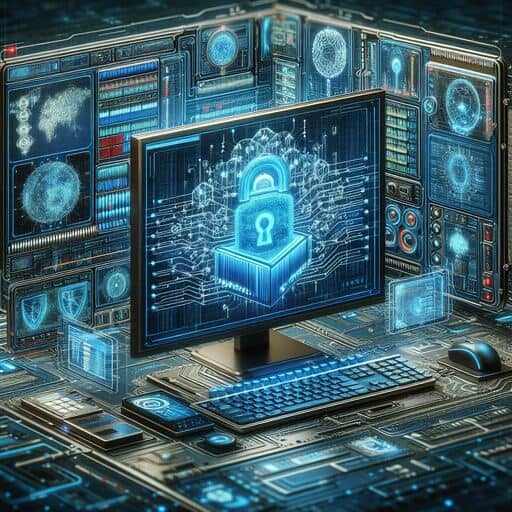
Let’s delve into the importance of protecting machine learning/Artificial Intelligence AI trade secrets and explore the legal framework, strategies, and enforcement aspects.
Trade secrets play a crucial role in safeguarding AI innovations. Here’s why:
AI trade secrets provide a competitive edge. By keeping algorithms, training data, and unique methodologies confidential, companies maintain an advantage over rivals.
Unlike patents, which involve public disclosure and formal registration, trade secrets are cost-effective. No government agency needs to approve or grant protection
Trade secrets can last indefinitely as long as they remain undisclosed and valuable. Patents, on the other hand, have limited terms.
Trade secrets allow creators to protect a wide range of AI-related information, from algorithms to data sets, without adhering to rigid patent requirements.
To effectively protect AI trade secrets, consider these strategies:
Limit access to sensitive AI information. Only authorized personnel should handle AI trade secrets.
Use non-disclosure agreements (NDAs) with employees, contractors, and collaborators. These agreements legally bind the parties to maintain secrecy.
Employ robust security protocols to prevent unauthorized access or leaks.
Secure physical locations where AI trade secrets are stored.
Educate and well-train your staff about the importance of confidentiality and their role in protecting trade secrets.
When breaches occur:
Promptly investigate any suspected breaches.
If necessary, pursue legal action against violators. Remedies may include injunctions, damages, or restitution.
Understand that trade secret laws vary globally. Seek legal advice tailored to the relevant jurisdiction.
Maintain records of trade secret protection efforts. This documentation strengthens legal claims in the case of legal disputes.
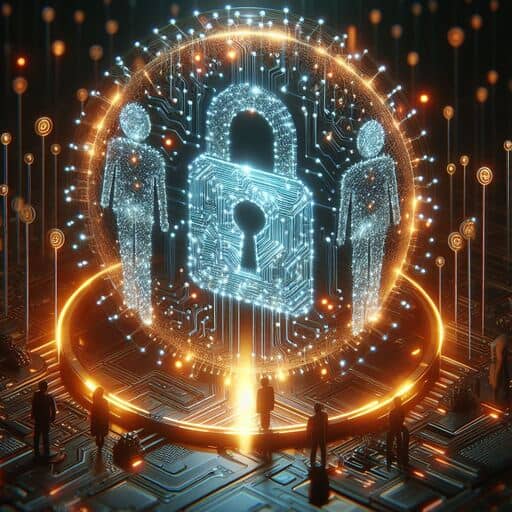
Let’s delve into the fascinating intersection of AI trade secrets and the challenges they pose.
Generative AI platforms, including large language models, have revolutionized content generation by analyzing data and producing original work based on training data and user prompts. However, these tools also present a unique threat to a company’s trade secrets. Here’s why:
Employees using generative AI applications might inadvertently input sensitive information, including trade secrets. Once captured, this information becomes part of the AI model and could compromise trade secret protection.
Under the Defend Trade Secrets Act (DTSA) and similar state statutes, trade secret owners must take “reasonable measures to keep such information secret.” These measures are essential for maintaining a company’s competitive edge and distinctiveness in the market.
To safeguard trade secrets while benefiting from generative AI, consider the following protective measures:
Encrypt sensitive data used in AI applications and restrict access to authorized personnel.
Implement AI-driven tools to detect potential trade secret leaks within generative AI systems.
Educate and Well-trained employees about the risks associated with AI tools and emphasize the importance of safeguarding trade secrets.
Leverage blockchain to ensure data integrity and prevent unauthorized modifications.
Understand international regulations and collaborate with legal experts to navigate cross-border challenges.
While prohibiting generative AI use is one solution, companies can strike a balance by adopting protective measures. By doing so, they can harness the power of AI while safeguarding their valuable trade secrets
| ASPECT | TRADE SECRET | ARTIFICIAL INTELLIGENCE (AI) |
| Definition | Information that is not generally known or reasonably ascertainable gives a business an economic advantage over competitors who do not know or use it. | Used to analyze large data sets, improve decision-making, automate tasks, and enhance product personalization. |
| Protection | Protected through confidentiality agreements, non-disclosure agreements, and secure business practices. Not registered with any governmental body. | AI models and algorithms can be protected under copyright law, but the data and insights they generate can sometimes be trade secrets. |
| Key concern | Keep the information secret, preventing unauthorized access and disclosure | Ensuring ethical use, avoiding bias, maintaining transparency, and understanding of decision-making processes. |
| Usage in Business | Used to maintain competitive advantages, enhance productivity, and safeguard proprietary methods or formulas. | Used to analyze large data sets, improve decision-making, automate tasks, and enhance product personalization. |
| Legal Framework | Governed by specific laws such as the Defend Trade Secrets Act (DTSA) in the U.S. Or the EU Trade Secrets Directive in Europe. | Subject to general intellectual property laws, data protection regulations, and emerging specific AI regulations. |
| Challenges | Risk of theft or accidental disclosure; maintaining secrecy can limit collaboration. | It requires significant data input, can be expensive to develop, and raises issues of privacy & control over AI decisions. |
| Value | The value lies in the exclusivity and confidentiality of the information. | The value lies in the capability to perform tasks that would otherwise require human intelligence. |
| Lifecycle | Indefinite as long as secrecy is maintained. | It may become obsolete as technology advances or as better algorithms are developed. |
AskByLaw aims to foster leadership, development, and balance through its online presence, increasing the legal awareness of citizens and the contribution of artificial intelligence to international trade. To help and engage corporate clients, The Askbylaw Law Firm has decided to publish an informative framework, i.e., articles, to answer common legal concerns and questions about AI and AI-driven business.
A blog titled "Navigating AI Trade Secrets of Complex Terrain: A Legal Perspective", has been written by an experienced legal expert. Based on this, he is recognized as an influential authority on AI law. He has provided an in-depth insight into the AI trade secrets as an illustrated and accomplished writer
In an AI trading conflict that arose between the two Saga brothers, Askbyalo provided a clear outline for preventing AI trading theft, along with experienced tips for dealing with such a question. And winning legal victories by handling our client queries with high-profile facilities.
| Country | Legal Framework | Protection Mechanisms | Enforcement | Challenges |
|---|---|---|---|---|
| United States | Defend Trade Secrets Act (DTSA), State laws | Strong litigation Framework, Federal Jurisdiction | Varies by the member state, Generally strong | Identification of Secrets, proving misappropriation |
| European Union | EU Trade Secrets Directive | Civil Remedies, Injunctions, Corrective measure | A Trade secret is protected under: .-Common law -Contract Act - Information Technology Act -Competition Act | Variation in implementation across state member |
| Australia | Corporations Act Common Law | Injunctions, Damages, Account of profits | Enforcement through courts | Balancing confidentiality with discloser requirements |
| Germany | Act on the Protection of Trade Secrets | Civil Remedies, cessation and desist order, Damages | Enforcement through civil litigation | High standards for maintaining secrecy |
| Italy | Industrial Property Code( Codice della Proprieta Industriale) | Injunctions, Damages, Removal of Infringing Products | Civil Law enforcement, occasionally criminal sanctions | Legal complexities, procedural challenges |
| Japan | Unfair Competition Prevention Act | Prohibition of improper acquisition, use, and disclosure | Civil and Criminal penalties | Cultural emphasis on negotiation over litigation |
| India | A Trade secret is protected under: .-Common law -Contract Act - Information Technology Act -Competition Act | Injunctions, damages based, equitable principle | Primary civil remedies, slow judicial process | Lack of Statutory law specific to AI trade secrets |
Identify the AI components that are critical to your business. These could be algorithms, training data, or proprietary models.
Ensure that employees handling AI systems understand the importance of trade secrets and their role in protecting them.
Limit access to AI-related systems and data. Implement strong authentication mechanisms.
If using third-party AI tools, assess their security practices and ensure they align with your trade secret protection goals.
Require employees, contractors, and collaborators to sign robust confidentiality agreements.
Conduct periodic audits to verify compliance with trade secret protection protocols.
Establish specialized teams responsible for AI development and trade secret protection.
Collaborate closely with intellectual property (IP) attorneys to navigate complex AI-related legal issues.
Implement strict data governance policies. Regularly review access controls and data handling practices.
Consider patenting AI-related inventions where possible. While patents don’t protect trade secrets, they complement the overall IP strategy.
Develop robust incident response plans for AI-related breaches. Be prepared to act swiftly if a trade secret leak occurs.
Continuously educate employees about AI ethics, trade secrets, and compliance.
Commercially valuable: It must have economic value because it is a secret.
Known only to Limited, Groups: The knowledge should be restricted to a select group of individuals.
Subject to Reasonable Steps for Secrecy: The rightful holder of the information must take reasonable measures to keep it confidential, including using confidentiality agreements with business partners and employees.
Trade secrets can include secret formulas, algorithms, data processing techniques, source codes, customer lists, know-how, or other valuable information that gives businesses a competitive edge. If you have any more questions regarding AI trade secrets, feel free to ask
Data Security Vulnerabilities: The extensive reliance on AI technologies involves the collection, cyber-attack, espionage by competitors, inadvertent disclosure through employee or third-party storage, and processing of vast amounts of sensitive data.
Insider Threats: Employees or insiders with access to trade secrets can pose risks.
Reverse Engineering Risks: AI applications can potentially reverse-engineer trade secrets.
Cross-Border Legal Complexities: Trade secrets may be exposed across international borders, complicating legal protection.
Evolving Cyber Threat Landscape: As AI evolves, so do cyber threats that can compromise trade secrets.
Access Controls: Limit access to sensitive information only to authorized personnel.
Confidentiality Agreements: Use non-disclosure agreements (NDAs) with employees, contractors, and partners.
Encryption and Data Security: Safeguard data through encryption and robust cybersecurity practices.
Physical Security Measures: Secure physical access to servers, labs, and facilities.
Monitoring and Auditing: Regularly monitor and audit access to trade secrets.
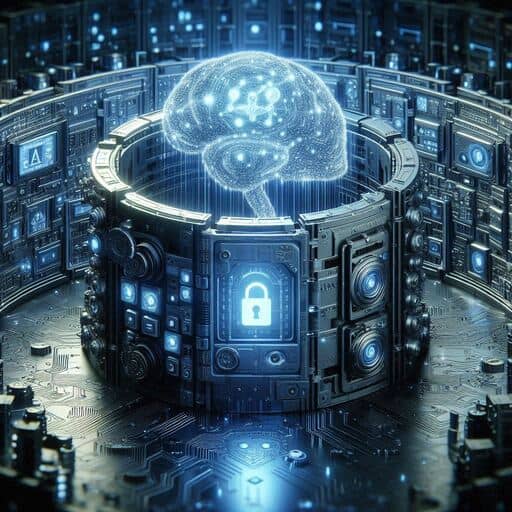
In today's article, we learned that in the complex landscape of AI trade secrets, striking the right balance between transparency and privacy is paramount. As organizations harness the power of AI algorithms, they grapple with the delicate dance of revealing just enough to build trust while protecting proprietary information.
AI expert Elon Musk has also been openly discussing artificial intelligence at length. Elon Musk expresses his thoughts on a regular page on his X platform.
Our journey through this article has highlighted the challenges facing innovators, legal experts, and policymakers alike. The European Union's Artificial Intelligence Act (AIA) emphasizes the need for responsible disclosure, emphasizing the importance of human-centric AI systems. However, the fine line between protecting trade secrets and promoting transparency is blurred.
As we conclude, consider this: AI's transformative potential lies not only in its algorithm but also in the ethical frameworks that govern its deployment. By promoting collaboration, knowledge sharing, and responsible practices, we can navigate the complex web of AI trade secrets with integrity and foresight.
Remember, the future of AI depends on our ability to balance innovation with accountability. Let's tread this path wisely, ensuring our trade secrets are protected while pushing the boundaries of artificial intelligence.
Feel free to expand on this conclusion and express your thoughts via comments, or let us know if you'd like to engage in a more in-depth discussion.
GET IN TOUCH
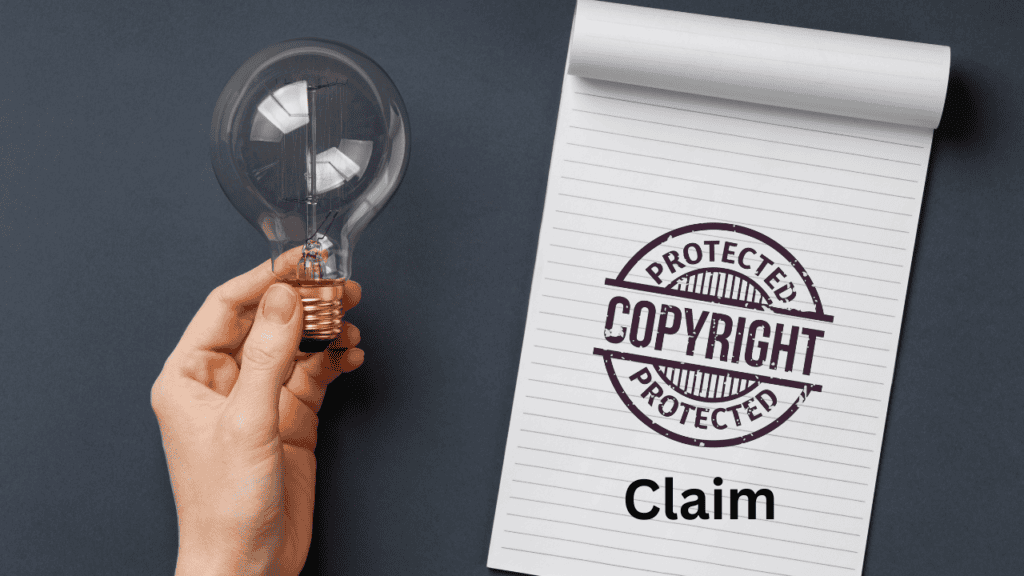
Creating digital property and creating income enjoyment is an imperative thought and careful endeavor, including false copyright claims on YouTube. When an original creator is accused of a false copyright claim, the genuine content creator can protect their original content creation if they seek to obtain, a strong cover of the law to protect their original creation. Often, due to misconceptions about the law and the negative experiences of well-wishers, the original creator neglects the protection of the law. As a result, he cannot properly defend his original content creation due to imaginary bias. This has led to a huge surge in fraudulently false copyright medicines, which raises many questions, and tensions about creation and reward.
Our article will help you find the motive behind a false copyright claim and inspire you to protect your original content creation in the world of intellectual property and be stress-free by making the creator aware and getting legal protection. To read

When a person self-identifies content or intellectual property created by fraudulent means, another person claims to have created the content. A false copyright claim makes such a claim and opposes and claims to deprive the creator of the original content or intellectual property from its use. Such claims are mostly found in video content. To read
Your initial reaction might be to assume that all claims are false, but that's not the case. Some claims are legitimate and made for various reasons.
There are cases where copyright claims are genuinely false. Here are three common scenarios:
Getting false copyright claim on YouTube videos can indeed be frustrating, especially when they are false. However, it’s essential to recognize that not every claim is illegitimate. Let’s explore how you can identify false claims and strategies for dealing with them:
If you use a song by your favorite artist in your video, and YouTube detects it. You’ll receive a copyright claim. This isn’t necessarily false; it means YouTube’s Content ID system detected copyrighted music, and ads may appear in your video in exchange for using the music.
Even if you purchased a license from a royalty-free music library, you might still receive a claim, in most cases. This is a valid claim, as stock music composers protect their work from unlicensed use.
There are cases when claims are genuinely false. Here are some typical scenarios:
YouTube’s Content ID system relies on a vast database of reference music tracks submitted by copyright owners. Unfortunately, some references aren’t legitimate. These include:
Some individuals maliciously attempt to remove content from YouTube by falsely asserting copyright ownership. YouTube reviews such requests to ensure they’re not abusive.
YouTube reported nearly 2.2 million false copyright claims in six months, with many videos later reinstated after determining the claims were incorrect.
If your video receives a Content ID claim, dispute it if you have valid reasons (e.g., you have all necessary rights to the content).
Use relevant evidence, such as license certificates, to support your case.
Persistence is necessary to resolve false claims. Keep communicating with YouTube and provide clear explanations.
Disputing a false copyright claim on YouTube involves several steps. Here’s a guide to help you navigate the process:
Location of the video that received the copyright claim. Visit your YouTube studio and find the video in question.
Click on the video to view the claim details. Understand which part of your video triggered the claim (e.g., specific music, visuals, or other content).
If your video falls under fair use, you can dispute the claim. Fair use includes commentary, criticism, education, and transformative content.
If you have the necessary licenses or permissions for the content, dispute the claim.
If the content is in the public domain it cannot be claimed.
Sometimes, claims are made in error due to similarities. Explain why your content is distinct.
If you used Creative Commons-licensed material correctly, dispute the claim.
Parodies and satirical content are protected under fair use.
If you believe the claimant is mistaken, you can file a counter-notification.
If your video doesn’t infringe any copyright, dispute the claim.
If you purchased music or visuals legally
Explain how your video qualifies as fair use.
if applicable
Show where your content differs from the claimed material.
Removing a copyright claim on YouTube can be a bit tricky, but I’ll guide you through the process. Here are the steps you can take:
When you upload a video to YouTube, the platform now automatically checks for copyrighted material. Before hitting the publish button, YouTube will inspect your content and notify you if any copyrighted material is detected.
You’ll see this in the Checks section during the upload process. It’s a game-changer because it lets you know about copyright matches before your video goes live.
You can then decide on the best course of action, whether it’s disputing the claim or taking steps to remove it.
On the same upload page, expand the details of the copyright claim by clicking “See Details,”
If you decide to move forward and upload the video, you have options:
Definitely, yes, a copyright claim on your YouTube video can indeed affect your views and monetization. Here’s how:
YouTube is less likely to recommend videos with copyrighted material. If your video contains copyrighted content, it might receive fewer views due to this recommendation algorithm. Additionally, some viewers might avoid videos with copyright claims.
If your channel isn’t monetized yet, you need to reach 1,000 subscribers and accumulate 4,000 total watch hours to qualify. However, copyrighted videos don’t count toward these watch hours. So, if your videos are copyright-claimed, they won’t contribute to meeting the threshold for monetization.
The copyright owner may restrict your video from appearing in certain regions or even block it entirely.
YouTube’s algorithm considers copyright claims when recommending videos. If your video has a claim, it might not be suggested as frequently.
When it comes to adding music to your videos without running into copyright issues, there are several alternatives you can explore:
Lickd offers access to a vast catalog of mainstream music from well-known artists. You can license popular tracks for your videos, and they’ll take care of any copyright claims for you.
Snapmuse provides royalty-free music that you can use in your YouTube videos. It’s a great resource for finding music without worrying about copyright restrictions.
Look for music released under Creative Commons licenses. These licenses allow creators to use the music for free, as long as they follow specific terms (like giving credit to the artist).
Public domain music is not protected by copyright and is free to use. You can find classical compositions, traditional folk songs, and other works that have entered the public domain.
Create your own music! If you’re musically inclined, compose original tunes for your videos. This ensures complete ownership and avoids any copyright issues.
Creating your own original music can be a rewarding and fulfilling experience. Here are some tips to get you started:
Listen to a wide variety of music across different genres. Pay attention to melodies, harmonies, rhythms, and instrumentation. Inspiration can strike from unexpected places.
If you don’t already play an instrument, consider learning one. Whether it’s the guitar, piano, or even electronic music production software, having an instrument at your disposal opens up creative possibilities.
Start by playing simple chords and experimenting with different progressions. Try major, minor, and seventh chords. Combine them to create unique sequences.
Melodies are the heart of any song. Hum or play around with notes until you find a catchy tune. Use scales as a foundation and explore different intervals.
If you’re interested in writing lyrics, jot down your thoughts, emotions, and experiences. Lyrics can add depth and meaning to your music.
Invest in recording equipment or use digital audio workstations (DAWs) like Ableton Live, FL Studio, or Logic Pro. Learn how to record, edit, and mix your tracks.
Explore synthesizers and sound libraries. Create unique sounds by tweaking parameters like filters, oscillators, and effects.
Collaborating with other musicians can lead to fresh ideas. Work with vocalists, instrumentalists, or producers to enhance your music.
Share your work with friends, family, or online communities. Constructive feedback helps you improve. Don’t be afraid to iterate and refine your compositions.
Music creation is a journey. Be patient with yourself, and stay curious. Learn from both successes and failures.
Promoting your original music online is crucial for gaining visibility and growing your fan base. Here are eight effective steps to help you get started:
Establish a professional online presence by creating a dedicated music website. Use platforms like WordPress/ Wix to build a site where fans can learn more about you, listen to your music, and find links to your social media profiles.
Distribute your music on popular streaming platforms like Spotify, Apple Music, and Amazon Music. Samsung Music. These services allow you to reach a global audience and monetize your streams.
Leverage social media platforms such as Instagram, Facebook, Twitter, Tik-Tok, etc., . Share behind-the-scenes content, teasers, and engage with your audience. Consistency is key.
Compile a professional press kit that includes your bio, high-quality photos, music samples, and any notable achievements. This makes it easier for journalists, bloggers, and promoters to feature your music.
Reach out to music blogs and websites that align with your genre. Submit your music for reviews, interviews, or features. Positive coverage can introduce your music to new audiences.
Visual content is powerful. Create music videos for your songs and share them on YouTube and social media. Engage viewers with captivating visuals that complement your music.
Collaborate with fellow musicians, producers, or influencers. Joint projects can expand your reach and introduce your music to their followers.
Perform live whenever possible. Whether it’s virtual concerts or local gigs, live shows create a direct connection with fans. Promote your shows through social media, flyers, and local event listings.
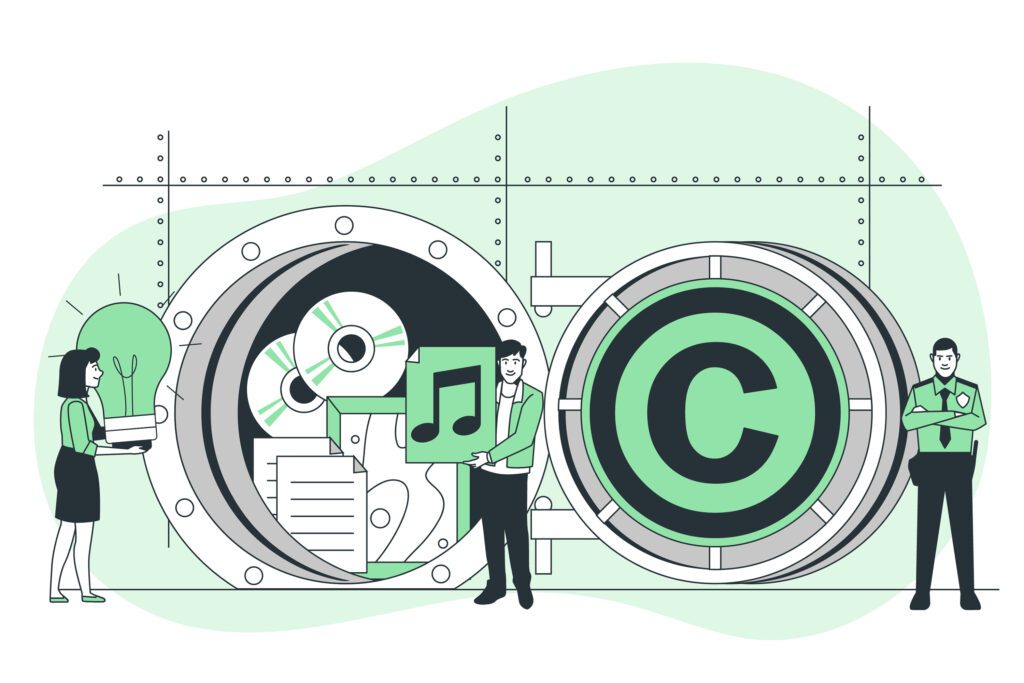
Judges evaluate fair use based on these factors:
The Purpose and Character of the Use: Is it for nonprofit educational purposes, commentary, criticism, research, or news reporting?
The Nature of the Copyrighted Work: Some works (e.g., factual or published) are more likely to be considered fair use.
The amount and substantiality of the portion used: Using a small portion is more likely to be fair use.
Effect on the market: If the use doesn’t harm the market for the original work, it’s more likely to be fair use.
Fair Use:
Definition: Fair use is a limitation and exception to the exclusive rights granted by copyright law to the author of a creative work.
Purpose and Character of Use:
Fair use involves unauthorized use that does not violate the copyright holder’s rights.
It is often transformative, adding new expression or meaning to the original material.
Commercial use can still qualify as fair use under certain circumstances.
Nature of the Copyrighted Work:
Fair use considers whether the use is outweighed by the public interest in its free dissemination.
It applies to various purposes like criticism, commentary, research, and news reporting.
Amount and Substantiality of Portion Used:
Fair use involves using a portion that is not substantial enough to appropriate the “heart” of the original work.
Effect on Market Value of Work:
Fair use does not harm the market or potential market for the original work.
Legal Basis: Section 107 of the U.S. Copyright Act outlines fair use criteria.
Copyright Infringement:
Definition: Infringement occurs when someone unauthorizedly uses a copyrighted work, violating the exclusive rights granted by copyright law.
Purpose and Character of Use:
Infringement does not further the purpose of copyright; it directly violates the holder’s rights.
Nature of the Copyrighted Work:
Infringement can appropriate the “heart” of the original work.
Amount and Substantiality of Portion Used:
Infringement involves using a portion substantial enough to harm the market for the original work.
Effect on Market Value of Work:
Infringement harms the market or potential market for the original work.
Legal Basis: Section 106 of the U.S. Copyright Act grants exclusive rights to creators.
Balancing Act:
Courts analyze fair use on a case-by-case basis, considering the four factors explicitly listed in section 107:
Purpose and character of the use
Nature of the copyrighted work
Amount and substantiality of the portion used
Effect on the market value of the work
Community Guidelines Strikes:
YouTube issues strike when your content violates the Community Guidelines.
Here’s how the system works:
First Strike: You receive a warning, but no immediate penalty.
Second Strike: Within a 90-day period, you face a two-week upload freeze (you can’t upload new content).
Third Strike: Another strike within the same 90-day period results in channel termination.
Copyright Strikes:
Copyright strikes occur when someone claims your content infringes their copyright.
If you receive multiple copyright strikes, your channel may be terminated.
You can file a counter notification if you believe the claims are incorrect.
Transparency and Appeals:
YouTube aims to be transparent about strikes, explaining why they occurred.
If you think a strike was a mistake, you can appeal it using the provided form.
Remember not to submit multiple appeal requests, as it can cause delays.
Today's article discusses the topic of false copyright claims on YouTube. I hope you find it useful.
Countering fraudulent copyright claims may seem difficult at first sight, but being well-informed and proactively confronting original content creators can save original content creators from undue interference with economic and social loss.
For original content creators considering false copyright claims as a potential strategy, it is important to understand that the legal and ethical consequences often outweigh any temporary and unfair benefits.
In today's environment where creativity is the pulse of digital content, adherence to proper copyright practices is an increasingly critical and imperative requirement. It is our culture to allow original art to flourish and protect it from obstruction. And every original content creator deserves their fair share of rewards.
Holders of false copyright claims do more than simply steal content. They create the illusion of being the original creator by stopping the flow of creativity, which violates the ethical lines of digital citizenship, which is why protecting original creativity is a constitutional right. A right of creation every original artist should get.
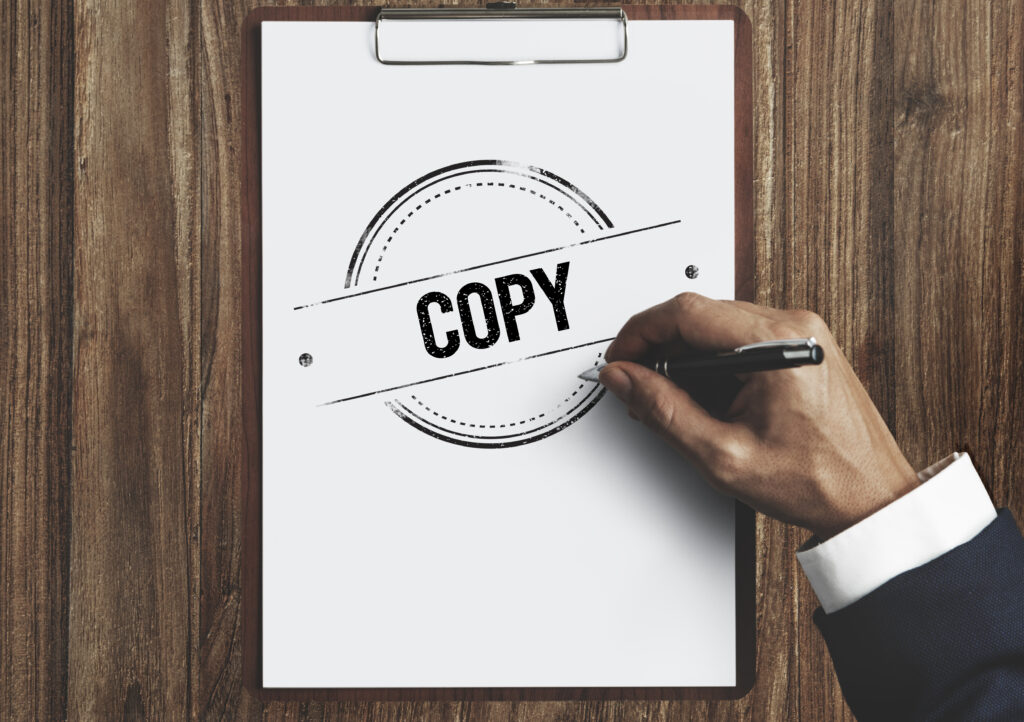
What are DMCA takedowns? In the vast expanse of digital content where pixels meet passion lies a battleground: the DMCA takedown process on YouTube. Picture this: your latest video, painstakingly crafted, dances across screens and gathers views like fireflies on a summer night. But what if someone else pirouettes with your creation? Fear not, for the Digital Millennium Copyright Act (DMCA) steps onto the stage. It’s both a sword and a shield a mechanism to protect your intellectual property and a compass for creators.
What are DMCA takedowns? Nota bane: that DMCA notice on YouTube counts as one strike against your entire account. If you receive three strikes within a 90-day continuing period, your videos and channel may be permanently removed. Make sure to follow the process diligently to protect your copyrighted content.
When infringing content pirouettes on your turf, the DMCA waltzes in. Here’s the choreography: notice-and-takedown. The copyright owner, like a vigilant conductor, raises their baton. YouTube's Grand Theater awaits a valid DMCA notice is elegantly composed, and triggers action. The curtain falls, and the content vanishes.
Creators, listen to you first closely! As legal guardians of your artistry, we wield our quills and gavels. If you find your work pirated, fear not. Knowledge is your armor. Whether you’re a seasoned YouTuber or a fledgling filmmaker, we’re here.
Should the DMCA tempest brew our legal ship sails? Consult us. We’ll decipher the Act’s cryptic verses, draft your notices, and steer you through the storm. Protect your pixels. Preserve your passion.
Are you ready to reclaim your creative seas? Consult with us now, and let’s hoist the anchor!
If your copyright-protected work was posted on YouTube without your authorization, you can submit a copyright removal request to request that the content be removed. Here’s how you can go about it:
To view the copyright removal requests you’ve previously submitted to YouTube:
The Digital Millennium Copyright Act (DMCA) is a United States copyright law that addresses issues related to digital content, intellectual property, and online infringement. Here are some key points about the DMCA:
The DMCA offers a safe harbor provision for online service providers (such as websites, social media platforms, and hosting services). These providers are shielded from liability for copyright infringement committed by their users, as long as they promptly respond to takedown requests.
Copyright owners can submit a DMCA takedown notice to request the removal of infringing content from online platforms. The platform must then take down the content promptly.
If a user believes their content was wrongfully taken down, they can submit a counter-notification to challenge the takedown. The platform may restore the content if the user complies with certain requirements.
The DMCA prohibits the circumvention of digital rights management (DRM) technologies used to protect copyrighted works.
A takedown notice is a formal request made by a copyright holder, or their authorized representative to remove infringing content from an online platform. Here are the key points about takedown notices:
Ignoring a takedown notice can have legal and practical consequences. Here are some potential outcomes:
If you ignore a valid takedown notice, the copyright owner may choose to file a lawsuit against you for copyright infringement.
If the court rules in favor of the copyright owner, you could be liable for damages, Which may include monetary compensation.
Continued infringement may result in the permanent removal of your content or even your entire account from the platform.
If you’ve received a DMCA takedown notice on YouTube and believe the claim is incorrect, you can file a DMCA counter-notice to dispute it. Here’s how you can go about it:
Of course Yes. The duration for resolving a DMCA takedown notice can vary based on several factors. Here are some key points to consider:
If the copyright owner responds to your DMCA counter-notice, there are a few possible outcomes:
The Fair use of YouTube is a legal doctrine that allows the use of copyright-protected material under specific circumstances without requiring permission from the copyright holder. Here are the key points about fair use:
Judges evaluate fair use based on these factors:
1.The nature of the copyrighted work: Some works (e.g., factual or published) are more likely to be considered fair use.
2. The nature of the copyrighted work: Some works (e.g., factual or published) are more likely to be considered fair use.
3. Amount and substantiality of the portion used: Using a small portion is more likely to be fair use.
4. Effect on the market: If the use doesn’t harm the market for the original work, it’s more likely to be fair use.
Fair use rules differ across countries and regions:
United States: Works of commentary, criticism, research, teaching, or news reporting may qualify as fair use.
European Union (EU): More limited exceptions exist, such as quotation, criticism, review, caricature, parody, and pastiche.
Other countries may have a concept called “fair dealing” with different criteria
Before uploading videos that use copyright-protected material, it’s advisable to seek legal advice from an expert.

Qoestion. What are DMCA takedowns? Answer. Looking at the intricate dance of digital rights and creative expression, the DMCA takedown process on YouTube emerges as a pivotal player. As content creators; we wield our cameras and keyboards to craft narratives that ripple across screens worldwide. Yet, within this virtual tapestry, copyright battles rage in a symphony of cease-and-desist letters, strikes, and appeals.
The DMCA, with its notice-and-takedown choreography, seeks to harmonize these discordant notes. But it’s not just legalese; it’s a call to action. Creators, with the help of AskByLaw, safeguard your creation and video. Educate your audience. Respect the rights of fellow artists. Let us navigate this labyrinth together, guided by the compass of fairness and the shield of DMCA knowledge, as per our article.
If you find yourself entangled in the DMCA web? Our legal team stands ready. Reach out for a consultation, and let us weave a strategy that protects your creativity and rights. Login Here
#DMCA Takedown Notice
#Copyright Infringement
#Copyright Infringement
#Digital Millennium Copyright Act (DMCA)
#DMCA Compliance:
#Infringing Content
Basic summary of a copyright claim on youtube Have you uploaded some videoes to YouTube every day, only to find out that you have been sued by the copyright holder? If, the said has happened to you, know that you are not alone. And claiming copyright claims are a common occurrence on YouTube, and they…
Discover the power of Janitor AI on Reddit Management 1. Introduction: Janitor AI on Reddit Today on this forum in the AI age we try to understand legal implications and other aspects with you on the topic "Janitor AI on Reddit". Although Janitor AI has started to be used on the Reddit platform so let's…
Legal insight: Janitor AI vs. Open AI 1. Introduction: Janitor AI vs. Open AI today I when thinking of the word AI, the concept of open AI versus revolutionary generative AI comes to mind. ChatGPT is also a much talked about concept in the world of AI. Janitor AI and Open AI are popular inventions…
AI trade secrets are a hotly debated topic and can also be called a solution to an emerging need. By checking the SWOT analysis and cost-benefit ratio of AI, it can be known that, shortly, we will understand the performance, future, uses, and limitations of this artificial intelligence (AI) and its commercial use in business.…
DMCA Takedowns on YouTube. YouTube is a major platform for uploading and sharing video content. YouTube gives its users the freedom to upload, like, and share videos.
YouTube has become a very popular website (platform) in the world. All kinds of people like comedians, teachers, vloggers, lawyers, Engineers, food recipe makers musicians, Companies etc. Create and upload their video content on YouTube.
It has become a common and easy thing to share copyrighted uploaded content on YouTube by a creative YouTuber. Due to this, the amount of copyright infringement has started to increase very alarmingly; this matter is capable of harming creative YouTubers.
DMCA Takedown gives such creative YouTubers the right to request their unauthorized content to be removed, allowing YouTube to remove copyright-infringing content from its platform and providing protection to creative YouTubers.
Have you felt the feeling that some user without your prior approval or permission has made the video you made and uploaded it on YouTube to get views and likes? If this has happened to you, this article is for you. In this article, I am going to show you a legal process through which you can easily remove copyright-infringing content from YouTube.
Have you heard the term DMCA Takedowns on YouTube? Yes, this term gives you ample protection against non-creative and unauthorized use of your original video content by others. What is a DMCA Takedowns on YouTube, Who Can File a DMCA Takedowns on YouTube? I'm here to discuss in detail what you should do if you receive a DMCA Takedowns on YouTube to protect your copyright on YouTube.
You put a lot of effort into creating your creative video and you find out that your hard-earned video content has been stolen and the person who stole your content has profited from it. You are tired of thinking about how to recover your original content, and videos from the person who stole your content.
And you are not sure how to proceed against them so if you are feeling more insecure than trust that I will give you sound legal advice and help you to protect your intellectual property. Read more about solving your problem.
" Any lawyer without law books would be like a labor without tools"
Tomas Jefferson
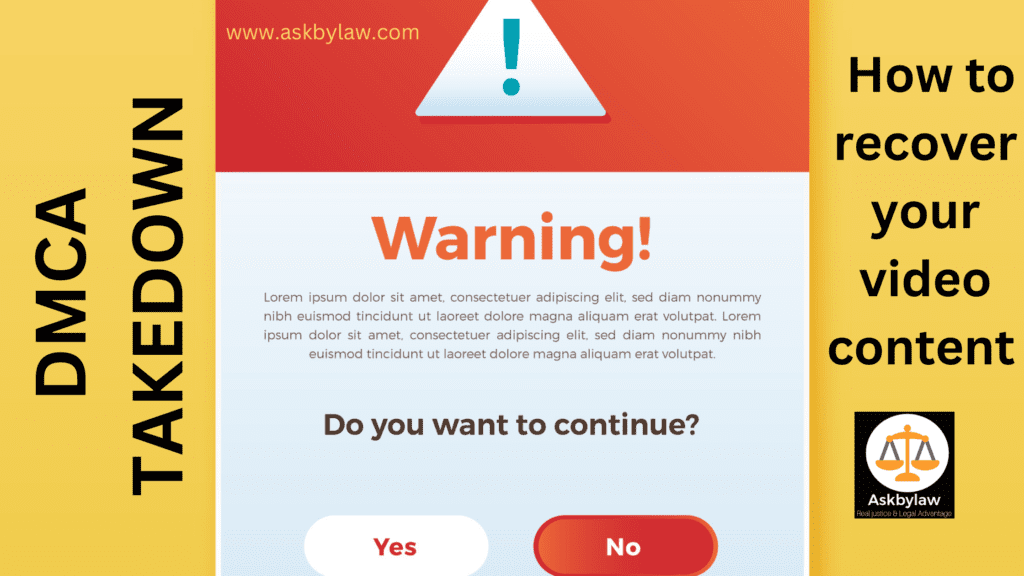
As an expert legal advisor with detailed knowledge of copyright and the ability to develop a fully legal-based YouTube content plan. I will definitely provide you with a structured outline to develop well described videos on "DMCA Takedown on YouTube" with legal protection.
This article will contain a legal framework of reliable information from high-level legal experience/expertise aimed at effectively educating readers and users.
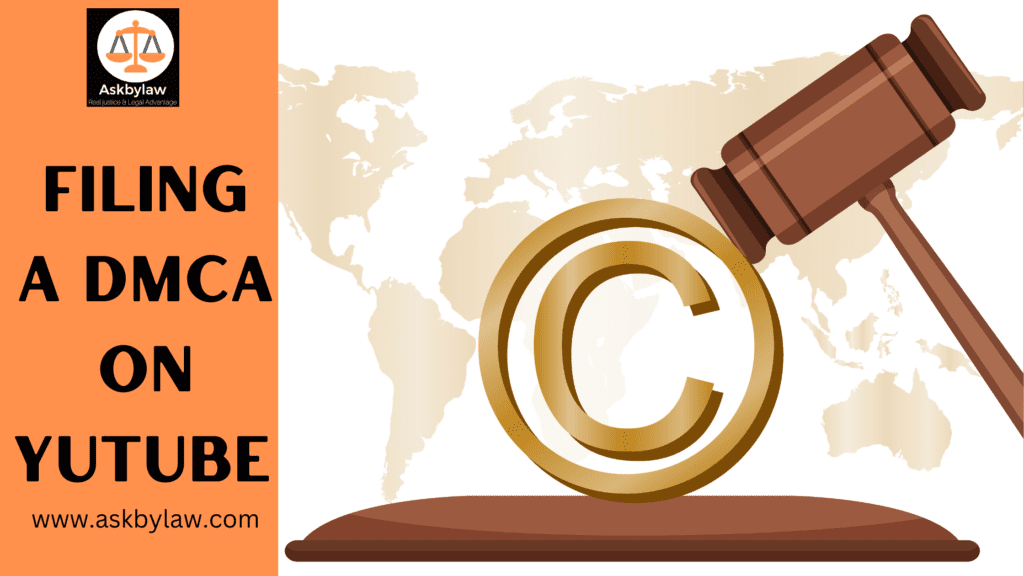
The Digital Millennium Copyright Act is a law of the United States of America. This Act is designed to implement the World Intellectual Property Organization's Copyright Treaty and Phonogram Treaties, which protect the production and dissemination of technology devices or services thereof.
This law is primarily designed to curb copyright infringement. This law is intended to protect the original copyright holder against injustice caused by unauthorized access to copyrighted works protected by law. An important issue in today's digital age is that the task of managing and protecting copyrighted content created by YouTubers themselves has become tedious and stressful.
The Digital Millennium Copyright Act addresses copyright concerns for creative YouTubers. The main purpose of the Digital Millennium Copyright Act is to prevent the unauthorized sharing and dissemination of creative YouTubers' creative content and rights on reputable platforms.
In 1998, the US Congress passed the Digital Millennium Copyright Act with the main and primary objectives of (1) establishing protections for online business or service providers in certain circumstances (2) providing incentives and protection to copyright owners against unauthorized access to their digital works in digital formats; (3) making it illegal to provide false copyright management information and/or to remove and/or alter such information under certain circumstances;
Section 512 of the DMCA, which deals with copyright, includes provisions regarding notices and counter-notices of copyright infringement.
When an owner voluntarily creates and displays digital works, without the permission of the original creative owner who created the work, a DMCA takedown is processed under the Digital Millennium Copyright Act for infringing the act of unauthorized access to the copyright and digital works created by the original owner.
Protection, which requires the creator of the original work that has been infringed upon, has to be invoked. A DMCA takedown is a legal means of early resolution of copyright infringement problems of online businesses or service providers.
The DMCA is a copyright infringement law of the United States of America. This law provides a remedy to the creator of copyrighted material to immediately remove copyright-infringing material from websites or other platforms without going to court.

The provisions of the DMCA provide necessary and essential protections to the original creator of copyright. This can be understood as follows.
Provide legal protection and security to owners or individuals to any person or company trade products or services through various online platforms such as a website or social media.
This provision is known as a self-harbor in the DMCA Act. This self-harbor provision protects against direct liability arising from copyright infringement and also encourages the development of user-generated digital content.
This system consists of an address system for immediate removal of all copyright-infringing content upon receipt of a DMCA notice based on the demand of a copyright holder providing an online business or service.
Protection against Fraud: This mechanism includes an effective management mechanism i.e. DRM (Digital Rights Management) to protect copyrighted content through the DMCA to prevent copyright infringement and prevent illegal use. And the main task is to prevent manufacturers from tampering with their content and preventing piracy.
The main purpose of the DMCA is to protect content creators' rights and freedom of expression. The provisions of the DMCA give importance to the intellectual property rights of creators and ensure that creators of content can do so online without any threat.
DMCA has created strict policies from YouTube in line with takedowns and has also implemented a system of Content IDs to address copyright issues. YouTube's policies prohibit the uploading of their copyrighted content by others without the permission of the original copyright owner. YouTube may track or block the copyright holder's content from being played further.
By developing the Content ID system, YouTube allows music labels and movie studio owners to upload content copyrighted by the original owners to its database, and then the Content ID system scans it. And YouTube often overlaps with other content. YouTube allows its original owner to advertise and monetize content.
Sometimes when a copyright holder notifies YouTube about copyrighted content uploaded by another user stating that the uploaded content falls under the definition of fair use.
YouTube will conduct a legal review of the notice they received, and this review proves that the uploaded copyrighted content does not fall under fair use. Any notice sent by the copyright holder will be treated as a false notice by YouTube and further processed. YouTube may also penalize the copyright holder for giving false notices.
Due to the penalty imposed by YouTube, the copyright holder who sent the false DMCA notice may be forced to appear in the court office, and reduceor lost the reputation of the person who gave the false notice may be seriously damaged and there may be circumstances of suffering financial loss. Statistical data for DMCA takedowns on YouTube
When YouTube receives a written notice regarding a DMCA from a copyright holder or their authorized legal representative, is YouTube sending that notice in compliance with the law? Reviews it. If the notice is found to be in compliance with DMCA rules, YouTube will immediately remove the infringing content in accordance with the provisions of the Digital Millennium Copyright Act and notify the user who uploaded the copyrighted content accordingly.
YouTube gives the option to provide a counter-notice to the user uploading the copyrighted content if the user of the revoked content is making fair use of the copyrighted content. If a user who makes fair use of copyrighted content gives a counter-notice to YouTube, the original copyright holder is notified by YouTube. If a user who makes fair use of copyrighted content does not provide a counter-notice to YouTube, YouTube will assume that the uploaded content is found to be infringing under the DMCA.
Following is the structure of this article based on the following citations for a detailed explanation of today's topic:
A fundamental principle of copyright law is the principle that the original copyright holder may grant limited or conditional permission to upload and monetize the content created by the original copyright holder for the user by obtaining the permission of the copyright holder to upload content created by him to his channel and paying royalties.
The fair use principle prohibits content creators from uploading their content to other users, commenting on it, criticizing it, producing news or reporting, publishing news or reports, educational and parody, or remixing the use of copyrighted content for other users with limited or conditional permission. Copyright given by creator, Fair use of copyrighted content is required under the DMCA to promote free speech, creativity, and sharing of ideas while using creator's copyrighted content.
Steps to avoid DMCA takedown action for other users to legally use the copyright holder's content include:

DMCA plays a crucial role in protecting and maintaining the safety of copyright creators' content and promoting content creation, and YouTube provides a legal framework to prevent abuse of content creator's rights and revenue streams.
Protecting and promoting copyright in today's digital age is an essential balancing act through the DMCA. DMCA is indispensable for a vibrant content ecosystem management.
In the digital world, it is imperative that every user be aware of the principles, policies, and laws of creators and consumers, and a clear understanding and vision of copyright rights and responsibilities of freedom of expression. One can contribute to the happiness and development of the virtual world.
Protect Your Creative Capital: Unleash the Power of DMCA Takedowns on YouTube! Safeguard Your Video Content and Take Control – Act Now for a Copyright-Secure Future! #DMCATakedowns #YouTubeProtection
If you are a copyright owner submit a valid DMCA (Digital Millennium Copyright Act) complaint through our web form, YouTube takes down that video and applies a copyright strike. If a user gets three copyright strikes in 90 YouTube days their account along with any associated channels, will be terminated by YouTube
If you are submitting a copyright removal request in error you can retract it. Retracting a copyright removal request will: Clear the copyright strike from the Uploader channel unless other content is contributing to the strike. Restore the Uploader content to YouTube, unless the Uploader deleted the said content.
As per our knowledge, DMCA takedown should be done by skilled, experienced and skilled and calm professionals. We have got the information that a website named www.DMCA.com is doing this kind of work. This website offers different packages for doing DMCA takedown.
#YouTubeDMCAprocessstep-by-stepguide #howtofightafalseDMCAtakedownonYouTube #legalexpertsforYouTubeDMCAdefense #YouTubeDMCAappealssuccesstips #legalsupportfor challengingDMCAtakedownsonYouTube
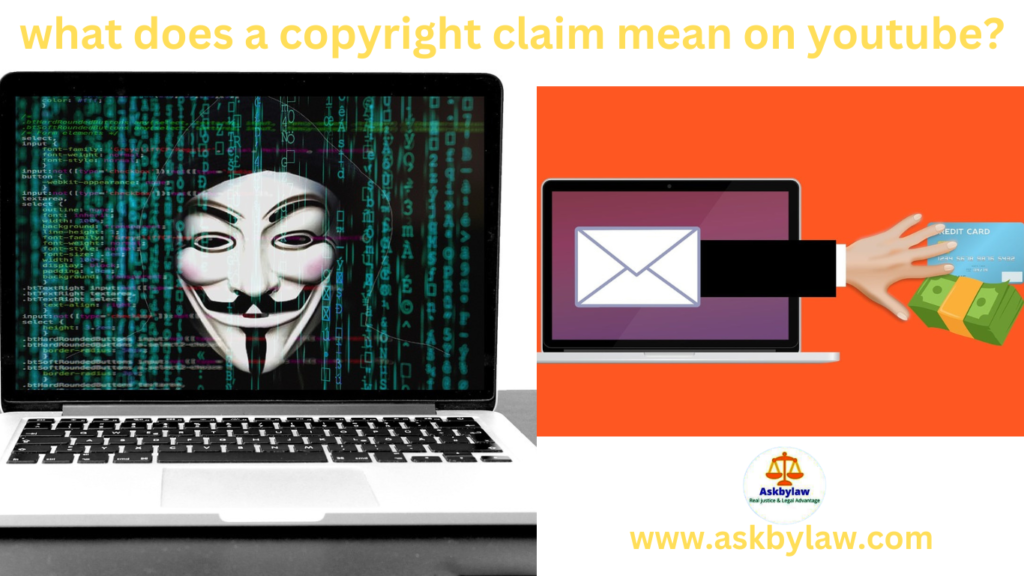
Have you uploaded some videoes to YouTube every day, only to find out that you have been sued by the copyright holder?
If, the said has happened to you, know that you are not alone. And claiming copyright claims are a common occurrence on YouTube, and they can be confusing for creators.
In today's blog, we discuss with you what is a copyright claim? How does it work? Also, What can you do if your video gets sued? We will provide information and explain it to you. We'll give you useful tips on "how to avoid copyright claims in the future"
Whether you're a new YouTuber or a Seasoned person. Read on to learn more about copyright claims on YouTube. Learn more about copyright claims on YouTube and protect your videos from copyright stress by reading our blog.
Subscribe to our blog for more tips on how to legally create and manage your YouTube channel well. Any copyright claim is a notice from YouTube that your video contains copyrighted material.
Any copyright claims may affect your ability to monetize your videos. There are two types of such copyright claims: Content ID claims and manual claims.
After the above discussion if you believe that your video does not infringe copyright. So there may be a copyright claim dispute for your channel. So you can take quick steps to avoid copyright claims on YouTube.
Did you aware that about 80% of YouTube video content that is protected by copyright? There are a lot of possible copyright claims there!
Learn how to comprehend copyright assertions on YouTube. We discuss with you. How to respond to them? And. How to prevent them in the future, in this blog post?
Understanding copyright assertions are crucial since they can have a significant impact on your YouTube channel. Continue reading to find out more about YouTube copyright issues and how to safeguard your channel. Also, take safety precautions for yourself.
I hope the said blog post is useful.
Whether are you a new YouTuber or a seasoned Professional? Read on to know more about copyright claim on YouTube.
Copyright claims are a common occurrence on YouTube, but how do they actually work? We'll look more closely at copyright allegations on YouTube in this section.
Including the role of YouTube's Content ID system, the process for filing a copyright claim. And the different types of copyright claim.
By understanding how copyright claims work, you'll be better equipped to protect your own content and deal with copyright claims filed against your videos.
A copyright claim can have a serious impact on your YouTube channel. Therefore, it's crucial to comprehend them and take precautions for your safety.
Continue reading to find out more about copyright disputes on YouTube and how to safeguard your channel.
YouTube's Content ID system is a tool that helps identify potential copyright violations. It works by scanning videos uploaded to YouTube to match copyrighted content that is registered with Content ID. If a match is found, the copyright holder can choose to claim the video. Which will give them exact control over how the video is used?
If you believe that your copyright has been violated on YouTube. You must file a copyright claim. The procedure for filing a copyright claim is relatively straightforward. You'll require to provide some basic information about the copyrighted material by you believe has been infringed, as well as the URL of the video you're claiming.
There are three main types of copyright claim on YouTube: first manual claim, second Content ID claim, and last third-party claim. Manual claims are filed by copyright holders who have not registered their content with Content ID. Content ID claims are filed by copyright holders who have registered their content with Content ID. A third-party claim is filed by companies that have been authorized by copyright holders to act on their behalf.
Copyright claims are common on YouTube. But, what are some of the most common scenarios that could lead to a copyright claim? The most frequent scenarios that can result in copyright claims are discussed in this section, including the unauthorised use of music, photographs, or video clips. We will also discuss the implications of fair use and transformative content on copyright claims.
By understanding the most common scenarios that can lead to copyright claims, you'll be better equipped to protect your own content and avoid copyright claims filed against your videos.
Copyright claims can seriously impact your YouTube channel, so it is important to understand the most common scenarios that can lead to copyright claims, and take steps to avoid them.
Fair use is a legal principle to permits limited use of copyrighted material without the permission of the copyright owner. Mutable material is material that has changed significantly from its original form, in some cases. Fair use and transforming content can protect you from copyright claims. However, it is important to consult with an attorney to determine whether your use of copyrighted material falls under fair use.
Read on to learn more about the most common scenarios that can lead to copyright claims on YouTube and how to avoid them.
• Some of the most common scenarios that can lead to copyright claims include:
• Using copyrighted music without permission or attribution.
• Using copyrighted images or video clips without permission or attribution.
• Sampling copyrighted music without permission or attribution.
• Creating a derivative work of copyrighted material without permission.
I hope this helps!
Copyright claims can have a significant impact on your YouTube channel. In this section, we'll discuss the consequences of receiving a copyright claim on YouTube, including potential consequences, such as video removal, copyright strikes, and channel fines. We will also highlight the importance of responding promptly and appropriately to copyright claims.
By understanding the impact of copyright claims, you will be better equipped to protect your own content and deal with copyright claims filed against your videos.
Copyright claims can have a serious impact on your YouTube channel, so it's important to understand the potential consequences and respond to copyright claims promptly and appropriately. Read on to learn more about the impact of copyright claims on YouTube and how to protect your channel.
If you receive a copyright claim on YouTube, there are several possible consequences. A copyright holder may choose:
Monetize your video and share revenue with the copyright holder.
If you receive a copyright claim, it's important to respond immediately. You can dispute the claim or accept it. If you dispute the copyright claim on YouTube, you will need to provide evidence to support your claim. If you accept the claim, your video will be affected as the copyright holder chooses.
If you receive three copyright strikes within a 90-day period, your channel will be terminated. This means that all your videos will be removed from YouTube and you will not be able to create a new channel.
In addition to copyright strikes, YouTube can also impose other penalties on your channel, such as:
Responding to copyright claims in a timely manner is important. If you do not respond to a copyright claim on YouTube within 30 days, the copyright holder may choose to remove your video or monetize your video without your permission.
• Reduced monetization opportunities.
• Restrictions on live streaming.
• Limitations on the ability to upload videos.
If you receive a copyright claim, it is important to respond promptly and appropriately. You should first review the claim to see if you believe it is valid. If you believe the claim is invalid on the basis of evidence, you can dispute the claim. If you believe the claim is valid, you can accept the claim or negotiate with the copyright holder. I hope this helps!
Copyright claims can have a significant impact on your YouTube channel. In this section, we'll discuss the consequences of receiving a copyright claim on YouTube, including potential consequences, such as video removal, copyright strikes, and channel fines. We will also highlight the importance of responding promptly and appropriately to copyright claims.
By understanding the impact of copyright claims, you will be better equipped to protect your own content and deal with copyright claims filed against your videos.
Copyright claims can have a serious impact on your YouTube channel, so it's important to understand the potential consequences and respond to copyright claims promptly and appropriately.
Read on to learn more about the impact of copyright claims on YouTube and how to protect your channel.
If you receive a copyright claim on YouTube, there are several possible consequences. A copyright holder may choose:
• Upload your video.
• Monetize your video and share revenue with the copyright holder.
• Block your video in certain countries.
If you receive a copyright claim, it's important to respond immediately. You can dispute the claim or accept it. If you dispute the claim, you will need to provide evidence to support your claim. If you accept the claim, your video will be affected as the copyright holder chooses.
If you receive three copyright strikes within a 90-day period, your channel will be terminated. This means that all your videos will be removed from YouTube and you will not be able to create a new channel.
In addition to copyright strikes, YouTube can also impose other penalties on your channel, such as:
If you receive a copyright claim, it is important to respond promptly and appropriately. You should first review the claim to see if you believe it is valid. If you believe the claim is invalid on the basis of evidence, you can dispute the claim. If you believe the claim is valid, you can accept the claim or negotiate with the copyright holder. Responding to copyright claims in a timely manner is important. If you do not respond to a copyright claim within 30 days, the copyright holder may choose to remove your video or monetize your video without your permission. I hope this helps!
GET IN TOUCH
Copyright claims can be a headache. But they don't have to be, we will walk you through the steps on how to respond to a copyright claim on YouTube. We will discuss available options, such as disputing the claim, seeking permission, or removing the disputed content. We will also explain the process of filing a counter-notice and its possible consequences.
By understanding the steps to resolve copyright claims, you will be able to protect your own content and combat copyright claims filed against your videos.
Copyright disputes can negatively affect your YouTube channel, so it's critical to know how to handle them and to respond quickly. Continue reading to find out more about resolving copyright disputes on YouTube and safeguarding your channel.
There are numerous actions you can take to settle a copyright claim you get on YouTube:
Remove disputed content. If you do not wish to dispute the claim or seek permission, you may remove the disputed content from your video. This will remove the copyright claim, but it will also remove the content from your video.
First, you need to review the claim to see if you believe it is valid. If you believe the claim is invalid, you can dispute the claim.
If you dispute the claim, you will require providing evidence to support your copyright claim on YouTube. You can do this by providing a link to the original source of the content or by explaining how your use of the content falls under fair use.
If you believe the claim is valid, you can obtain permission from the copyright holder to use their content. You can do this by contacting the copyright holder directly or by using YouTube's Content ID match tool. Enter a counter-notification. If you dispute a copyright claim and the copyright holder doesn't respond, you can file a counter-notice. This will allow you to restore your video and keep monetizing it.
If you issue a counter-notice, you will require providing specific information, including your contact information, the URL of the claimed video, and a statement that you believe the claim is invalid. You will also need to swear or affirm that the information you are providing is accurate.
If the copyright holder does not respond to your counter-notice within 10 business days, your video will be reinstated and you will be able to keep monetizing it. If the copyright holder responds, they can file a lawsuit against you. I hope this helps!
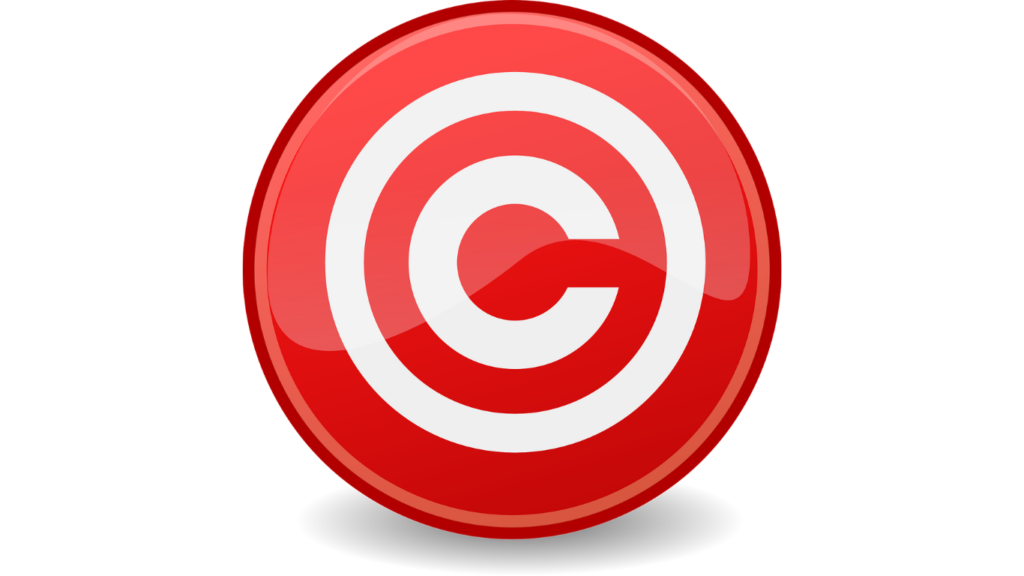
Your video's power to earn you money is gone.
First, you. Sign in to YouTube Studio. From the left menu than after selecting Copyright and Click New Removal request
Copyright protection applies to works created after January 1, 1978, and listen to you it is valid for the author's lifetime plus an extra 70 years.
Listening to you carefully, No. The only thing that will delete the claim is deleting the copyrighted content.
Hear to carefully. Deleting a video doesn't make the copyright claimant or copyright strike go away
In this blog post, we have discussed the basics of copyright claims are on YouTube. We've covered what copyright claims, how they work, and the potential consequences of receiving a copyright claim. We've also discussed steps you can take to resolve copyright claim on youtube.
We hope this blog post has been informative: If you, have any questions or doubt about copyright claims on YouTube, please feel free to comment below.
A copyright claim is a notification from YouTube that your video contains copyrighted material.
Copyright claims can have a significant impact on your YouTube channel.
There are three main types of copyright claims on YouTube: manual claims, Content ID claims, and third-party claims.
You can dispute a copyright claim, get permission from the copyright holder, or remove the disputed content from your video.
If you receive a copyright claim, it is important to respond promptly and appropriately
If you file a counter-notice, the copyright holder has 10 business days to respond. If they don't respond your video will be reinstated
In order to protect your content, it is important to be aware of copyright laws and policies. You may contact the YouTube Copyright Center and the U.S. You can do this by visiting the Copyright Office website. We encourage you to share your experiences with copyright claims on YouTube in the comments section below. We'd also love to hear your questions about copyright claims.
#Copyrightstrike #YouTube copyright #YouTubecopyright infringement #YouTube copyrightclaimprocess #YouTubecopyrightclaimappeal #YouTubecopyrightclaimconsequences #YouTubecopyrightclaimmonetization #avoidcopyrightclaimYouTube #PreventcopyrightclaimYouTube, #ProtectyourcontentonYouTube #CopyrightclaimvsCopyrightstrike #YouTubecopyrightclaim vs copyrightstrike #CheckcopyrightclaimYouTube
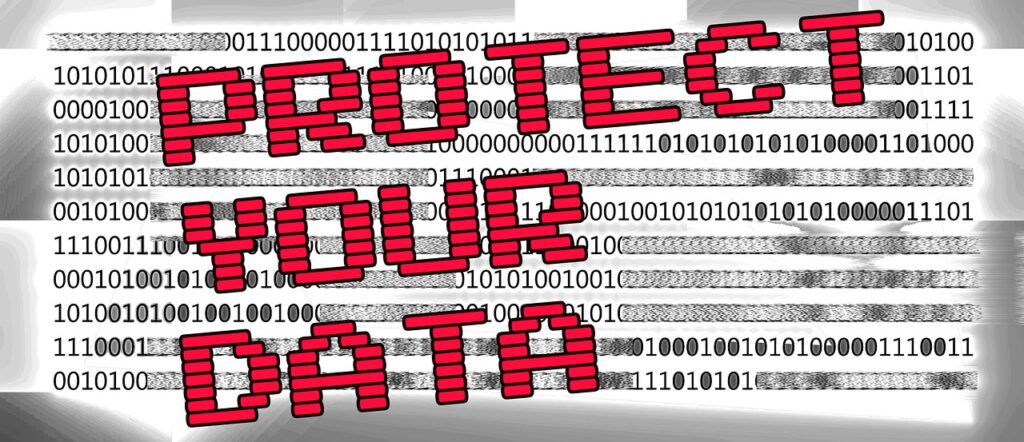
In today's day-by-day growing internet world, it becomes very necessary and imperative to understand cyber laws and be aware of them. This article will help you immensely to protect everyone's digital rights, learn here the basic principles of cyber law as well as the foresight and user behavior to investigate important areas like data protection privacy rights, and cybercrime, and understand your rights and responsibilities of cyber law—audit cyber law attitudes by defining roles.
Join us in this campaign to empower yourself by taking the initiative to confidently protect yourself, your company, and your society with the knowledge and awareness of cyber law and contribute to building a strong nation.
Welcome to the world of cyber law studies and interesting information on our Askbylaw Associates blog. In today's internet world, internet has become ingrained in our veins, internet and its related crimes and various academic aspects are affecting our lives directly or indirectly.
So it is imperative that you study cyber law. From studying your personal usage data to protecting your intellectual property rights and fighting to put a positive end to cybercrime, this cyber law can shape your digital system by navigating it.
Cybercrime leads to some greedy, avaricious, and violence-loving people misusing the Internet to make life difficult and dire for humanity-loving people.
Cybercriminals are becoming increasingly modernized by adopting the theory of organized and perfect crime through the Internet. They are preying on humanitarians by increasingly using various modern techniques to exploit readers' personal information by stealing, deceiving, dividing, and disrupting their businesses.
Our purpose in creating this blog is to provide you with practical insight and advice on identifying and complying with cyber law regulations. Whether you are an individual or an owner protecting your company from cybercrime, we are confident that this blog will surely help you.
In the moment's digital age, cybercrime and cyber law cases have come ineluctable. And with rapid-fire advances in technology and wide use of the Internet, cybercrime has come a major concern for individuals, businesses, and governments around the world.
Cybercrime refers to illegal conditioning committed in the digital realm. Cybercrime is known by the names mentioned then. These names are playing, identity theft, phishing, and data breaches.
It poses significant pitfalls to sequestration, security, and fiscal well-being. To effectively combat cybercrime moment, it's essential to have a comprehensive understanding of cyber law and cyber law cases.
And this includes the legal frame, regulations, and practices that govern online conditioning and cover individualities and companies from cyber pitfalls. The cyber law of any country elaborates on colorful aspects including intellectual property rights, data protection, cyber pitfalls, and online fraud.
And it provides a legal frame for probing, executing, and chastising cyber culprits and icing that justice is served in the digital sphere. Eventually being informed about cybercrime and cyber law empowers individuals and associations to take visionary ways to cover their digital means, educate themselves about online pitfalls, and promote a safer digital terrain.
We can work together to produce a flexible and secure cyberspace for you by fostering a deeper understanding of cybercrime and cyber law.
One illustration of cybercrime is phishing. Phishing is a system exercised by cybercriminals to deceive individuals into furnishing sensitive information, similarly as usernames, watchwords, or credence card details, by pretending to be a secure reality. The culprits generally shoot fraudulent emails or produce imitative websites that imitate licit associations, similar to banks, gregarious media platforms, or online retailers.
These fallacious dispatches frequently prompt the donors to relate to a sausage or give their particular information, under the guise of streamlining account details or naming a critical conclusion. Once the unknowing fatalities expose their sensitive information, the cybercriminals can exploit it for coloring vicious purposes, similar to identity larceny, fiscal fraud, or unauthorized access to accounts. Phishing radars can target both individuals and associations, and they remain to be a significant trouble in digital geography.
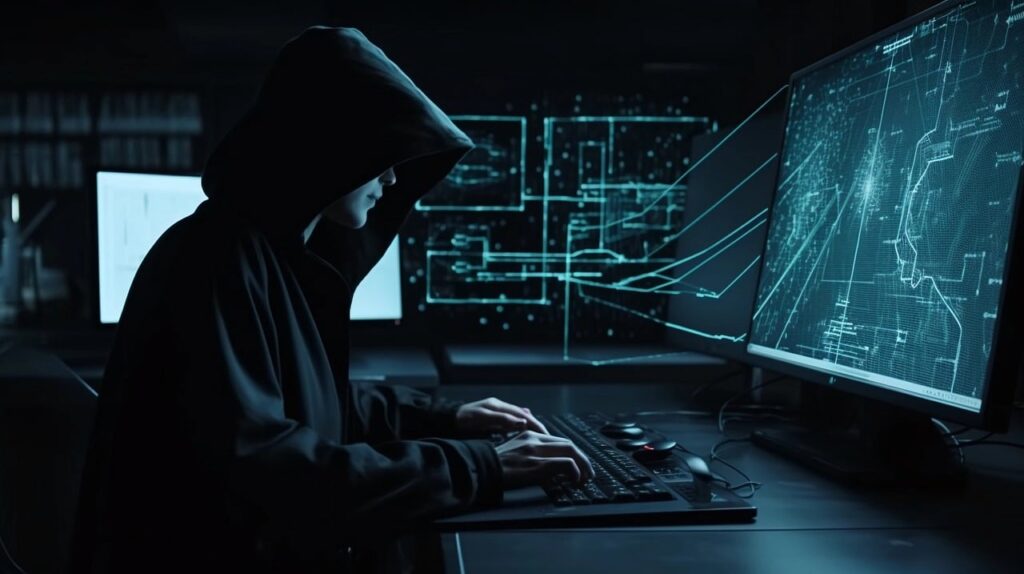
Inherent rights and responsibilities are fundamental factors of any legal system and cyber law is unprecedented in history. In the digital age, where technology is intertwined with our daily lives, it is important to gather the birth rights and responsibilities of cyber law.
Individuals have the inherent right to distinction, freedom of expression, and protection against unauthorized access to their particular information. Cyber law ensures that these birthrights are upheld and provide legality.
Remedies for breach of law. However, with birth rights come responsibilities. Obliged to display cybercrime responsibly and unethically in cyberspace, refraining from engaging in conditioning that violates the birthrights of others. This includes respecting intellectual property rights, refraining from cyberbullying and importuning, and using technology in a way that does not tamper with screens or disrupt the functioning of digital systems.
By acknowledging and accepting these birthrights and responsibilities, individuals can contribute to a safer and more inclusive digital landscape, advance trust, and make cyber law enforcement workable.
It is inevitable that we, as addicts of technology, fear our birthrights and responsibilities in the digital realm, as it empowers us to form informed opinions, encompass ourselves and others, and ensure a symphonic consent across the vast geography of cyberspace.
The complaint or Report computer or network vulnerabilities to the National Cyber Security Communications and Integration Center at 1-888-282-0870 or at www.us-cert.gov/report. Forward phishing emails or unauthorized websites to NCCIC at phishing-report@us-cert.gov

Operative cyber law enforcement and countermeasures play an important part in maintaining a safe and secure digital ecosystem. As the frequency of cybercrime continues to boost, it's imperative to have robust mechanisms in position to descry, seize and seize cybercriminals.
Cyberlaw enforcement agencies, both in public and international settings, are responsible for combating cyber threats and enforcing the rule of law in the digital demesne.
These agencies pay for technical chops and slice-byte technology to track down cyber criminals, collect digital substantiation and bring them to justice. Also, cyber law provides various remedies to remedy the damage caused by cybercrime. These remedies may include damages for loss of life, restoration of the addressing system or stolen data, and legal damages.
Warrants for felons. Also, cyber law enforcement agencies unite with international counterparts to attack cross-border cyber crimes, given the global nature of cyber problems.
By effectively administering cyber laws and enforcing applicable remedies, we can deter cybercriminals, protecting individuals and organizations from harm.
Cybercrime is a day-by-day growing legal issue. And it is important for businesses and individuals to prepare of digital risks and to take steps to protect themselves. There are a number of things that can be done to protect against cybercrime.
Using strong passwords and security questions
• Keeping software up to date
• Being careful about what information you share online
• Using a firewall and antivirus software
• Being aware of phishing scams
The police seek a bond for the fatality. She/he must purport that they will pay 1.5 moments the reimbursed quantum to the bank in case their claim is false or if other calls are made on the quantum.
| Unauthorized use or access of computer or mobile and gaining advantages | Punishment |
| To get federal or state security information | Up to Ten(10) years |
| Unauthorized use or access of computer or mobile and gaining advantages | First conviction 5 (Five) years Second conviction less than 20(Twenty) years |
| Unauthorized use or access of computer or mobile and get information | First conviction 1(One) year Second conviction less than 10(Ten) years |
| Intentionally damage of transmission | First conviction less than 10(Ten) years Second conviction less than 10(Ten) years |
| Extortion through computer | First conviction 5(Five) years Second conviction less than 20(Twenty) years |
| Password related offense | First conviction 1(One) year Second conviction less than 10 (Ten)years |

The ever-evolving geography of technology brings forward arising trends and an instigative future for cyber law. As creations similar as artificial intelligence, the Internet of Effects, and blockchain remain to reshape our digital world, the field of cyber law must acclimatize and evolve alongside.
One showy trend is the seat on data security and sequestration. With the added collection and application of particular data, there's a growing want for complete regulations that guard individualities’ sequestration birthrights and govern the responsible running of data by associations.
Another rising trend is the transnational collaboration and adjustment of cyber ordinances. As cyber pitfalls transcend public boundaries, cooperation among countries is essential to combat cybercrime effectively. Sweats to establish global fabrics, covenants, and collective legit
Backing agreements will remain to fashion the future of cyber law. Also, the ascent of cyber conflict and country-patronized hacking highlights the significance of developing robust legit.
Digital fabrics to manipulate this new format of truculence in the digital demesne. The future of cyber law also holds expostulations and openings in areas similar to artificial intelligence, independent instruments, and virtual currencies, where legit.
Digital fabrics need to acclimatize to the special legit and ethical allegations they present. By staying abreast of rising trends, embracing technological creations, and furthering a visionary path to legislation, the future of cyber law holds immense eventuality to cover individualities’ birthrights, foster invention, and ensure a secure and inclusive digital society for conceptions to come.
Other states have not created cyber-related laws as the federal US has enough laws. However, the following laws are governed by the states.
1. California consumer privacy Act (CCPA)
2. SHIELD ACT-New York
3. Cybersecurity laws of New York
Prohibits unfair or misleading business practices in the federal market.
1. Identify 2. Detect 3. Respond 4. Protect 5. Recover 6. Rebuild
In conclusion, an understanding of cybercrime and cyber law is necessary in the moment's digital period. Cybercrime poses significant pitfalls to individualities, companies, and governments, challenging a complete knowledge of the legit.
Cybercrime and regulations that govern online conditioning. By feting the birthrights and liabilities in cyber law, individualities can contribute to a safer and further inclusive digital terrain.
Operative cyber law enforcement and remedies are pivotal in combating cyber pitfalls, arresting perpetrators, and furnishing remedies for fatalities. As technology advances and new trends clip, the future of cyber law holds immense eventuality to cover sequestration, address ethical counter-accusations, and foster invention. It's essential for individuals and associations to stay informed, acclimatize to evolving trends, and laboriously fascinate in sweat to make a flexible and secure cyberspace for all.
By embracing the principles of cyber law, we can inclusively work towards securing our digital means, promoting trust, and icing a symphonious concurrence in the digital demesne.
Remember, You are not alone.
About the Author: Viren Dave is the founder and partner of a law firm called Advocate Askbylaw. He specializes in enhancing engagement and user peace of mind by helping troubleshoot user legal queries. And, starting his career as a lawyer, he supports solving many legal issues in civil, criminal, property, consumer, family, and corporate law. You can find him on his blog or under mentioned social links:
GET IN TOUCH
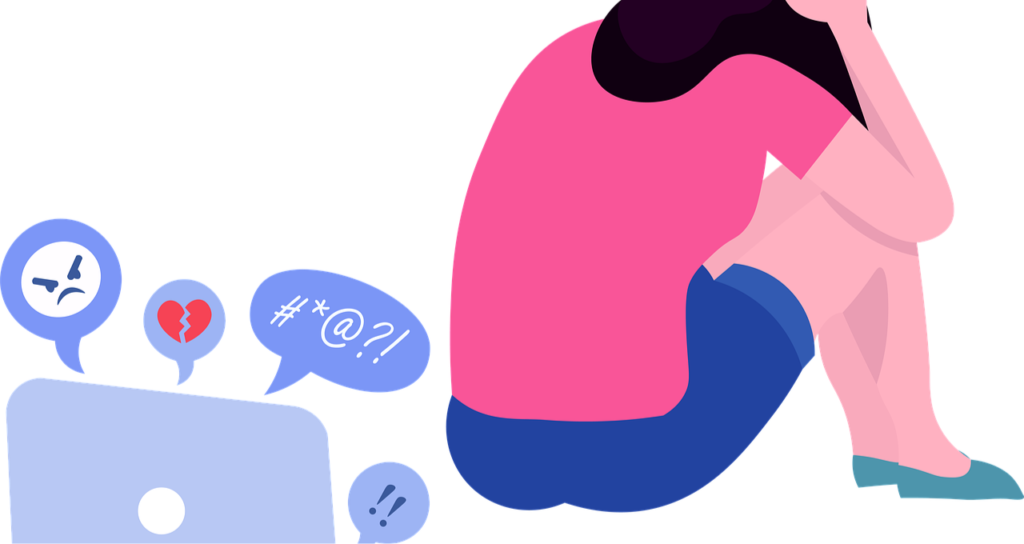
Sextortion is a growing crime in which criminals use threats of exposing sexually explicit photos or videos to extort money or other favors from victims. And Victims of this crime may experience catastrophic effects on both an emotional, social, and financial level.
An outline of sextortion law and self-defense tips for victims is provided in the said blog post.
Extortion is when you use compulsion, such as threats, to get someone to perform a task for you. The prevalence of the Internet and social media has given crime a new face. Similar to extortion, Sextortion is the act of illegally extorting money from someone to satisfy their financial demands through sexual exploitation and abuse.
Sextortion is when someone is coerced into doing something against their will by using guilt, leverage, or damaging information about them. Currently, these are all social media platforms for sextortion, such as Facebook, and Instagram, and Twitter is used for this commonly.
USA law does not classify sextortion as a separate felony. But if you are suspected of it, you could potentially face charges for other felonies including bribery and blackmail.
Let's look you at a few sextortion cases to better understand the penalties for this crime and the accusations the defendants were charged.
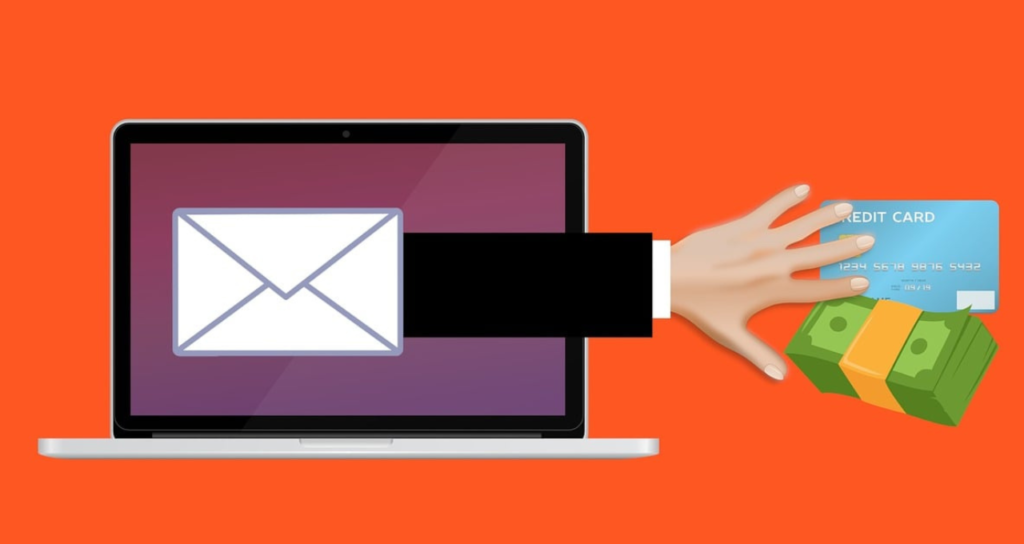
Although no specific enactment presently exists regarding sextortion in USA, you can be charged with several different crimes if you commit sextortion, including:
Depend on the circumstances of your case you could be charged with one or several of these crimes. Because sextortion generally involves crimes that do over the World Wide Web, you could be charged with a civil crime. Still, you could be charged with sexual exploitation of a minor under 18 U, if you’re indicted of committing sextortion against a minor .S. Code Section 2251. This law states that any person who forces or persuades a minor to engage in sexually unequivocal conduct can face up to 30 times in civil captivity.
Utmost sextortion crimes involve the use of a computer. However, you could be charged with unauthorized access to a computer under 18 U, if you hack a computer to commit sextortion. S.C. Section 1030. A felony conviction of this crime is punishable by over 10 years in prison and fines of a maximum of $ 250,000.
It’s important to understand the options available for pursuing legal action against the perpetrators if you have been a victim of sextortion. You can consider both civil and felonious proceedings to seek justice. In civil proceedings, you can file a action against the lawbreaker, seeking compensation for the damages you have suffered as a result of the sextortion. This can include fiscal losses, emotional torture, and any other detriment caused. In felonious proceedings, the state prosecutes the lawbreaker for their conduct, aiming to hold them responsible for the crime committed. Understanding the nuances of each option will help you determine the most applicable course of action grounded on your circumstances.
Civil and felonious proceedings differ in their nature, objects, and norms of evidence. In civil proceedings, the burden of evidence is generally lower than in felonious cases. You may need to demonstrate that it's more likely than not that the sextortion passed and caused you harm. The advantage of civil proceedings is that you have further control over the process and the eventuality for fiscal compensation. On the other hand, felonious proceedings bear the state to prove the guilt of the lawbreaker beyond a reasonable mistrustfulness. The advantage of felonious proceedings is that they can affect in the lawbreaker being held criminally responsible and potentially facing imprisonment or other felonious penalties.
Still, the decision to pursue felonious charges lies with the executing authority, and the process may take longer and involve less direct input from the victim.
Anyhow of the legal avenue you choose, having legal representation is essential. An attorney endured in handling sextortion cases can guide you through the legal process, cover your rights, and endorse on your behalf. They can help you gather and present supporting substantiation, similar as digital records, dispatches, or other applicable attestation, to strengthen your case.
Duly conserving and presenting substantiation is pivotal for both civil and felonious proceedings. It can substantiate your claims, establish a timeline of events, and contribute to the overall strength of your case. Working nearly with legal professionals and furnishing them with all available substantiation will greatly enhance your chances of carrying a favorable outgrowth in court.
When seeking legal expedient for sextortion, consider the options of civil and felonious proceedings grounded on your situation. Understand the advantages and challenges associated with each path and consult with an educated attorney to guide you through the process. Flashback, strong legal representation, and supporting substantiation are vital in presenting a compelling case in court. By taking decisive action and seeking justice, you not only empower yourself but also contribute to raising mindfulness and combating the intimidating frequency of sextortion crimes.
Valentina Pinto Sousa, plead guilty to extortion and unauthorized computer access charges after he hacked into computers belonging to dozens of young women–including Teen Girl of USA Cassidy Wolf–to obtain nude images and videos.
In court, Valentina Pinto Sousa admitted to using malware and remote administration tools to hack the webcams of computers and take nude photos of teenage girls and young adults. If the victims would not send him additional explicit pictures and videos, he threatened to post the pictures online.
Valentina pinto Sousa faced up to 10 years in prison and a Maximum fine of $1 million for his crimes but was sentenced to 19 months in state prison earlier this year.
If you are suffered with a crime related to sextortion, call an attorney at Askbylaw Associates today.
Louis John, of Antony Ana, was sentenced to six years in prison after being convicted guilty of computer hacking and wiretapping charges.
Authorities said Louis John disguised malicious software as music or videos and sent them to women and teenage girls. Through the software, Louis John could infiltrate more than 100+ computers and find sexually explicit photos in the computers’ memory.
He used the said photos to threaten victims, even following through on one threat when he posted nude images of a woman on her friend’s MySpace page.
Sextortion scams sometimes begin with seemingly innocuous contacts on social media or dating services. The victim will eventually be forced to transmit obscene photographs, get naked on camera, or perform sexual actions while on video by the offender. The photographs and videos that result can then be kept for ransom.
You find an email in your inbox that says the sender has one of your passwords. They threaten to publish your private images or videos until you give money, or explicit material, or engage in sexual activity. Many of these frauds rely on password harvesting, which could be a bluff unless you still have sensitive data on an old site.
Some of the creepiest sextortion situations involve the victim’s device getting infected with malware. Once inside, a hacker can gain access to cameras and microphones, as well as installing key loggers. This implies that someone could be watching your every step (in the vicinity of your computer). They can also find the passwords to all of your accounts using keyloggers. This may seem unlikely, but it happens more frequently than you might imagine.
Someone could get their hands on your sexual photographs or videos if you’ve ever sent them over social media or a chat app, or if you have them saved on one of those platforms. If you don’t comply with the demands, they may use your account to distribute the photographs to friends, relatives, and coworkers.
There is no specific "fraud" law on civil positions. A narrower law similar to the Stopping Harmful Image Exploitation and Limiting Division Act of 2019 ("Shield Act") is familiar, but the civil ordinance mainly enumerates other non-specific bills that cover the online aspects of the crime. According to a Brookings Institution study, there are several civil bills that have been used to try to prevent sextortion, especially those involving the death of children.
According to the Brookings Institution study, the most common civil enactment applied to make sextortion cases is 18U.S.C.§ 2251, which prohibits the sexual exploitation of children. Pursuant to§ 2251( a), “ Any person who employs, uses, persuades, induces, entices, or coerces any minor to engage in... any sexually unequivocal conduct for the purpose of producing any visual definition of similar conduct ” is subject to an obligatory minimal judgment of 15 times in captivity. Of the sextortion cases studied,§ 2251 was used in 55 to 65 of the cases.
Two affiliated bills — 18U.S.C.§§ 2252 and 2252A — are used to make the damage, distribution, and possession of material associated with child sexual exploitation and child pornography, specifically. Of the sextortion cases studied, these bills were used in roughly 38 and 24 of cases, independently.
Title 18U.S.C.§ 2422( b) governs the compulsion or enticement of a minor to engage in illegal sexual exertion. This enactment was used to make in 24 of sextortion cases. Still, like other applicable child pornography bills, this provision is applicable only in cases involving minors, which cases involve significantly more severe rulings than other general bills involving adult victims. For cases that don't involve a child victim or the specific sexual rudiments associated with sextortion, prosecutors may calculate on civil bills governing more general felonious geste , similar as highway robbery, stalking, or computer hacking.
The most relevant federal statute not specifically targeted at sextortion activity or minors, but that nevertheless is used to prosecute sextortion cases is the federal extortion statute—18 U.S.C. § 875 (d), which applies to:
Whoever with intent to extort from any person, any plutocrat or other thing of value, transmits in interstate or foreign commerce, any message containing, any trouble to injure the property, or character of the addressee or of another or the character of a departed person or any trouble to charge the addressee or any other person of a crime.
The extortion statute was used in 37% of the federal cases examined in the Brookings Institution report. Although other provisions within § 875 provide an enhanced 20-year sentence for the extortion of a ransom or a threat to injure the person of another, the coerced production of nonconsensual pornography warrants only a fine and a maximum 2+ year sentence.
When sextortion geste Is specially targeted against linked individualities, in 14 of cases, prosecutors have reckoned on 18U.S.C.§ 2261A, which is the civil stalking qualification.
In 17 cases, the civil acts presiding hacking or appropriation of gregarious media accounts have been exercised to make sextortion exertion. These are the civil identity larceny law ( 18U.S.C.§ 1028A) and the Computer Fraud and scurrility Act( 18U.S.C.§ 1030).
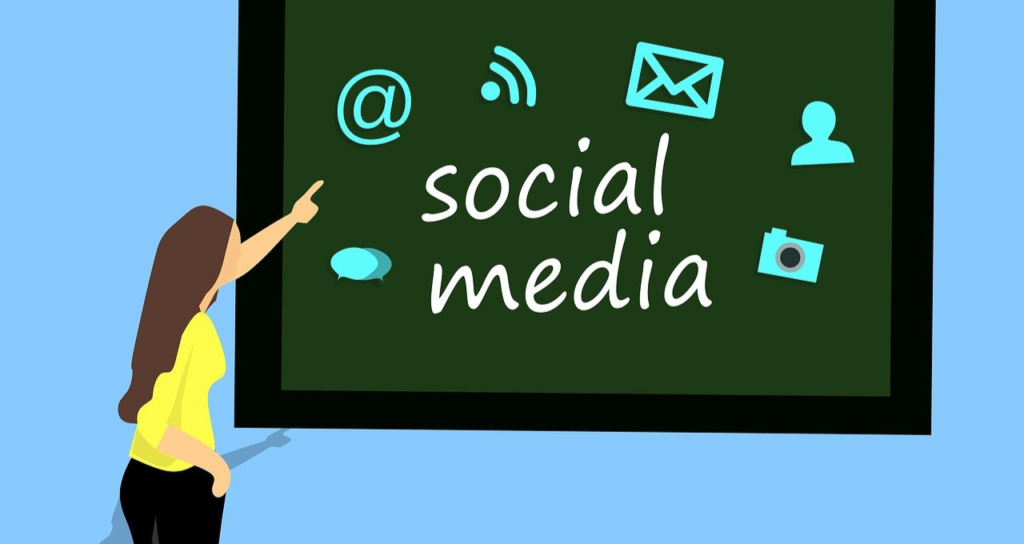
2. Cover yourself by being conservative about the information you partake online. Avoid telling sensitive details, similar as your address, phone number, or intimate images, to unknown individualities or on insecure platforms.
3. Be conservative of the information you partake on social media, as it can be used to exploit or impact you by malignant actors. Review and modernize your sequestration settings on social media platforms on a diurnal base to insure you have control over who has access to your particular information.
4. Strong passwords, secure online gesture, and sequestration settings play a vital part in precluding sextortion.
5. For all of your online accounts, including dispatch and social media, use unique and delicate passwords.
6. To add a redundant degree of security, enable two- factor authentication whenever possible. When dealing with individualities online, especially in converse apartments, social media, or dating apps, use caution.
7. Avoid participating unequivocal images or engaging in intimate exchanges with people you don't know well. Familiarize yourself with sequestration settings on social media platforms and acclimate them to limit the visibility of your particular information to trusted individualities only.
8. Mindfulness of sextortion warning signs and strategies to avoid falling victim is essential. Learn about the strategies used by extortioners, similar as blackmail, deception, and impersonation.
9. Be password for red flags, similar as unasked friend requests, requests for unequivocal images, or suspicious gesture from online contacts. However, trust your instincts and cut off communication incontinently. if someone attempts to force or manipulate you.
10. Flashback, It isn't your fault, and seeking backing is critical. Contact trusted musketeers, family members, or legal enforcement if you believe you're the victim of sextortion.
11. By staying informed and rehearsing caution, you can empower yourself to navigate the online world safely and help the ruinous consequences of sextortion.
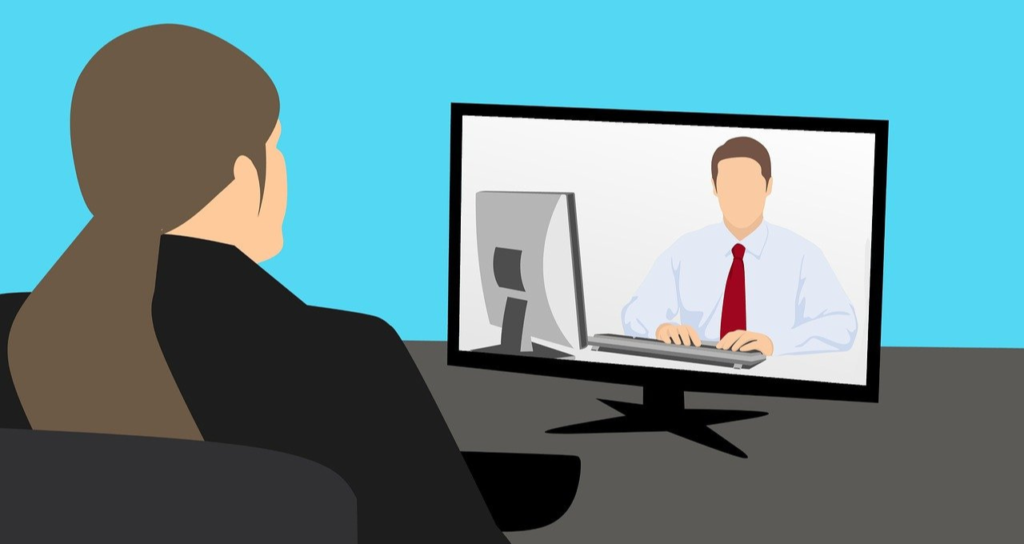
Blocking and deleting emails or chatting as soon as possible ignore them to collect proper electronic evidence.
If you realize you're a victim of sextortion, or know someone else who is, call your local FBI office or toll-free at 1800 immediately call to FBI with proper digital evidence.
Yes, I could
May be psychological suffering, and serious mental health issues such as depression, Financial stress, disturb office/homework, and anxiety.
You read carefully, Sextortion is a serious crime in USA today. That can have a devastating impact on victim.
Have you been the victim of a sextortion crime, so don't worry about it, As well as, we have sufficient resources available to provide you with affordable legal support.
You are not alone.
About the Author: Viren Dave is the founder and partner of a law firm called Advocate Askbylaw. He specializes in enhancing engagement and user peace of mind by helping troubleshoot user legal queries. And, starting his career as a lawyer, he supports solving many legal issues in civil, criminal, property, consumer, family, and corporate law. You can find him on his blog or under mentioned social links:
GET IN TOUCH
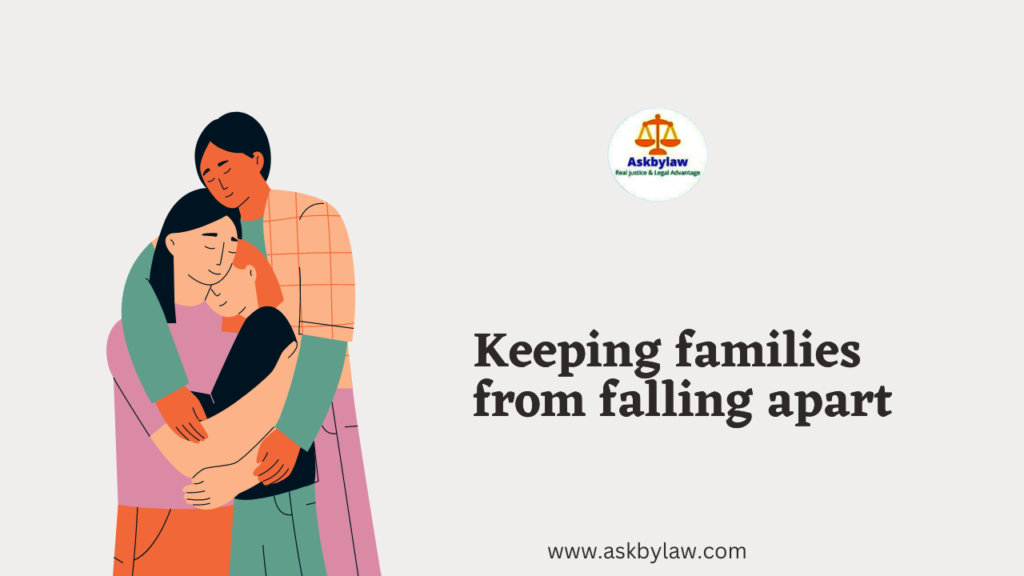
Did you know public health workers have a number of legal and ethical responsibilities? Also, these responsibilities are to protect patients and ensure they receive the best possible care provided by healthcare workers.
Healthcare diligence is one of the most essential and important sectors on the planet. Because it engaged people's lives and well-being, all healthcare professionals are expected to provide patients with safe, effective, ethical care. And they must also follow the Legal and ethical responsibilities of the healthcare workers guidelines. Thus ensuring patient safety and security.
In this blog post, we will discuss with you some of the most of critical Legal and ethical responsibilities of the healthcare workers. I hope you find the said information very useful.
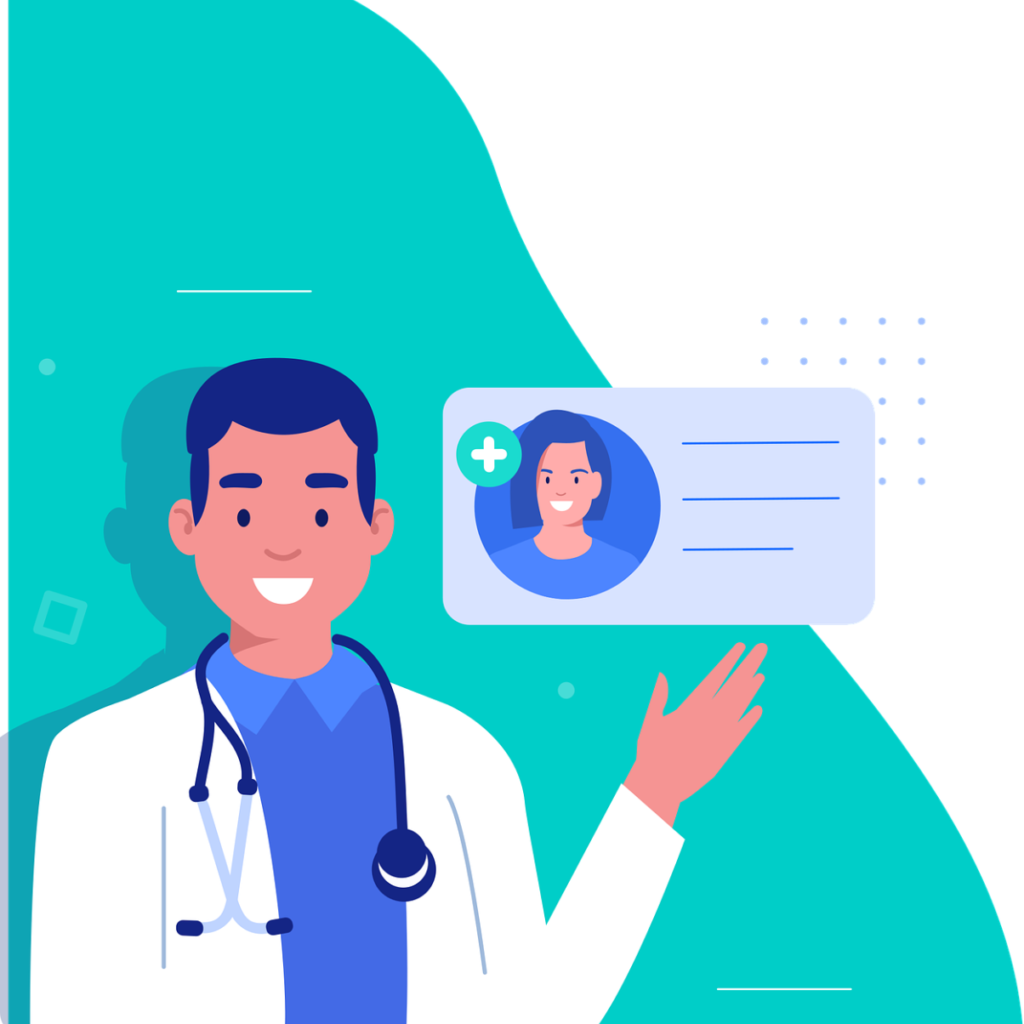
Legal and ethical responsibilities of the healthcare workers
Health law regulations are complex and ever-changing geography. You can ensure that you and any individuals you watch, for, and love, have access to high-quality, nicely priced healthcare by having an introductory understanding of it. The American healthcare system is a massive and delicate network of payers, providers, and controllers. Health laws and regulations play a critical part in icing that this system works effectively and efficiently. Health legislation and laws come in a variety of forms, each serving a distinct function. While colorful laws aim to guarantee that medical professionals deliver high-quality care, others are intended to cover the confidentiality and sequestration of patient information. Still, others are designed to make health insurance more affordable and accessible.
Health laws and regulations can be a challenge to understand, but they're essential forcing that everyone has access to quality, affordable health care. By understanding the basics of health law and regulations, you can help to ensure that you and your loved body are defended
In the said blog post we will give you a comprehensive overview of the most important health law regulations as well as tips on how to act up with them. We will cover patients analogous with the Affordable Care Act and HIPAA and the Americans with Disabilities Act and the Children's Health Insurance Program law. We will also give you awareness to help you find further information and get the help you need it.
Whether you're a business owner, an individual, or the Legal and ethical responsibilities of the healthcare workers the said blog post is for you. Read on to learn further about health laws and regulations and how they can impact you.
| Legal and Ethical liabilities | ||
| Criminal Law | Civil Law | Tort (General tort) |
| Practice without license | Practice without license | Malpractice |
| Theft | Right to informed consent | Misuse of Patient |
| Misuse of Narcotics | Right to access medical records | Physical misuse |
| ETC. | Right to privacy and confidentiality | Psychological misuse |
| Right to refuse Medical treatment | Sexual misuse | |
| Right to quality care | Defamation | |
| Negligence | ||
| Attack of privacy | ||
| Assault and Battery | ||
| Wrongly Admit | ||
Citizen healthcare workers are required to uphold ethical principles. Like beneficence and non-evil and justice. Healthcare beneficence means that healthcare workers must act in the best interests of their patients and provide care that promotes their patient's well-being. Also, non-maleficence means that the Legal and ethical responsibilities of the healthcare workers should avoid harming their patients and justice means that healthcare workers should treat all patients fairly and equally.
The legal and ethical responsibilities of the healthcare workers have a basic duty to provide the best standard of care to patients. This essentially means that they must use their skills and knowledge to provide the best possible care for their patients.
Legal and ethical responsibilities of the healthcare workers have a duty to keep their patient information confidential regarding the patient's health. Basically means that they cannot share the patient's information with any other unauthorized person without the consent of the patient.
Legal and ethical responsibilities of the healthcare workers must respect their patients' right to make their own decision about their care. Basically means that they cannot force a patient to undergo a treatment or procedure that the patient does not want to undergo.
Legal and ethical responsibilities of the healthcare workers have a duty to report any suspected patient abuse to the appropriate authorities. Such as a include physical, sexual, and emotional abuse.
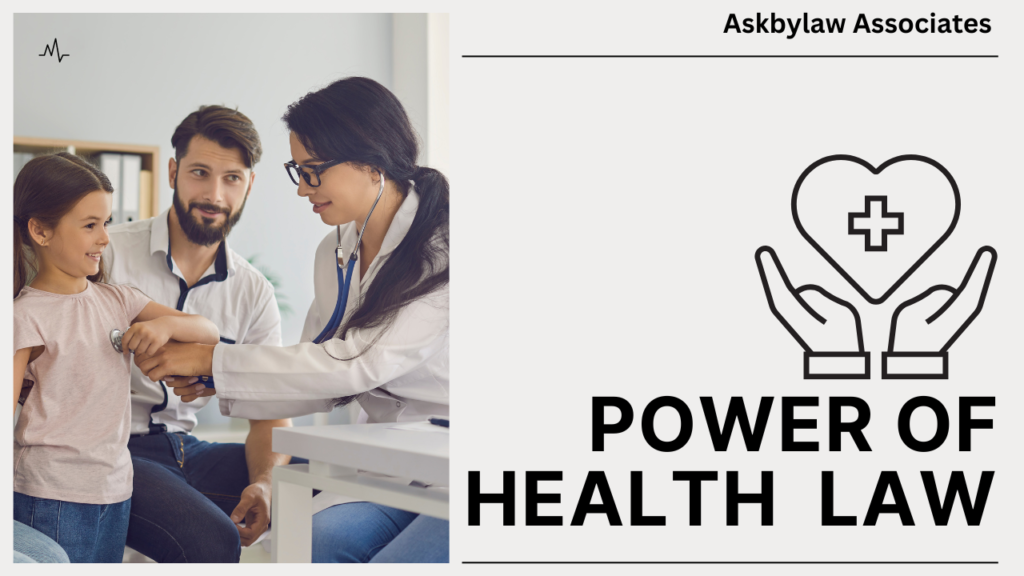
America's healthcare law refers to a body of laws and regulations. This governs the Legal and ethical responsibilities of the healthcare workers industry, including healthcare providers, insurance companies, and patients. This article covers a wide range of legal issues in healthcare laws which are as follows.
America's Health Insurance Portability and Accountability Act set national standards for the privacy and security of protected health information. This HIPAA applies to the Legal and ethical responsibilities of the healthcare workers and providers, health plans, and healthcare clearinghouses that transmit PHI electronically.
In the US. The centers for Medicare and Medicaid Services oversee the Medicare and Medicaid programs. And this provides health insurance coverage for millions of Americans. And all centers for Medicare and Medicaid Services sets standards for the quality of care provided to beneficiaries. It also regulates Legal and ethical responsibilities of the healthcare workers and providers and insurers that participate in these programs.
The FDA regulates the safety and efficacy of medicines, medical bias, and other healthcare products. A, the FDA approves new medicines and bias for use in the United States of America. And monitor the safety of products already available in the market.
The US Stark Law prohibits physicians from making referrals for certain designated health services to organizations in which they have a financial interest. Also, this law is created to prevent financial conflicts of interest in the healthcare industry.
America's anti-kickback laws prohibit healthcare providers from offering or accepting bribes or kickbacks in exchange for patient referrals. The said Act is also created to prevent financial conflicts of interest and ensure that patients receive the best possible care.
USA's ACA is also known as Obamacare. These include provisions regulating the health insurance industry. Similarly, taking individualities to have health insurance and proscribing insurance companies from denying content grounded in pre-existing conditions.
Legal and ethical responsibilities of the healthcare workers and providers in America can be held liable for medical malpractice if they fail to meet the norms of care anticipated in their profession. Performing in detriment or injury to the case.
Legal and ethical responsibilities of the healthcare workers and providers in the US have a legal and ethical obligation to gain informed concurrence from cases before administering any treatment. It also includes furnishing case information about the pitfalls and benefits of treatment options, as well as any options.
US Legal and ethical responsibilities of the healthcare workers and providers must maintain patient confidentiality and protect patient privacy. So cannot share patient information without the patient's consent. Except in cases of it is required by law.
US healthcare legislation regulates health insurance, including the Affordable Care Act (ACA). In which individuals are required to have health insurance. This insurance also provides protection for patients with pre-existing conditions.
America's healthcare law addresses healthcare disparities. And, it seeks to ensure that all individuals have access to quality healthcare regardless of their race, ethnicity gender, or socioeconomic status.
Healthcare legislation in the USA includes provisions to prevent fraud and abuse in the healthcare industry. Such as the False Claims Act, Which imposes penalties on individuals and entities that submit false claims for payment to the government.
In healthcare law in America addresses legal and ethical issues related to end-of-life care. Such as advance directives and the right to die.
Also, healthcare legislation plays an important role in regulating the healthcare industry, and ensuring that patients receive safe and effective care. These healthcare providers, insurance companies, and patients must be aware of healthcare laws and regulations to ensure compliance with their rights and to protect their rights.
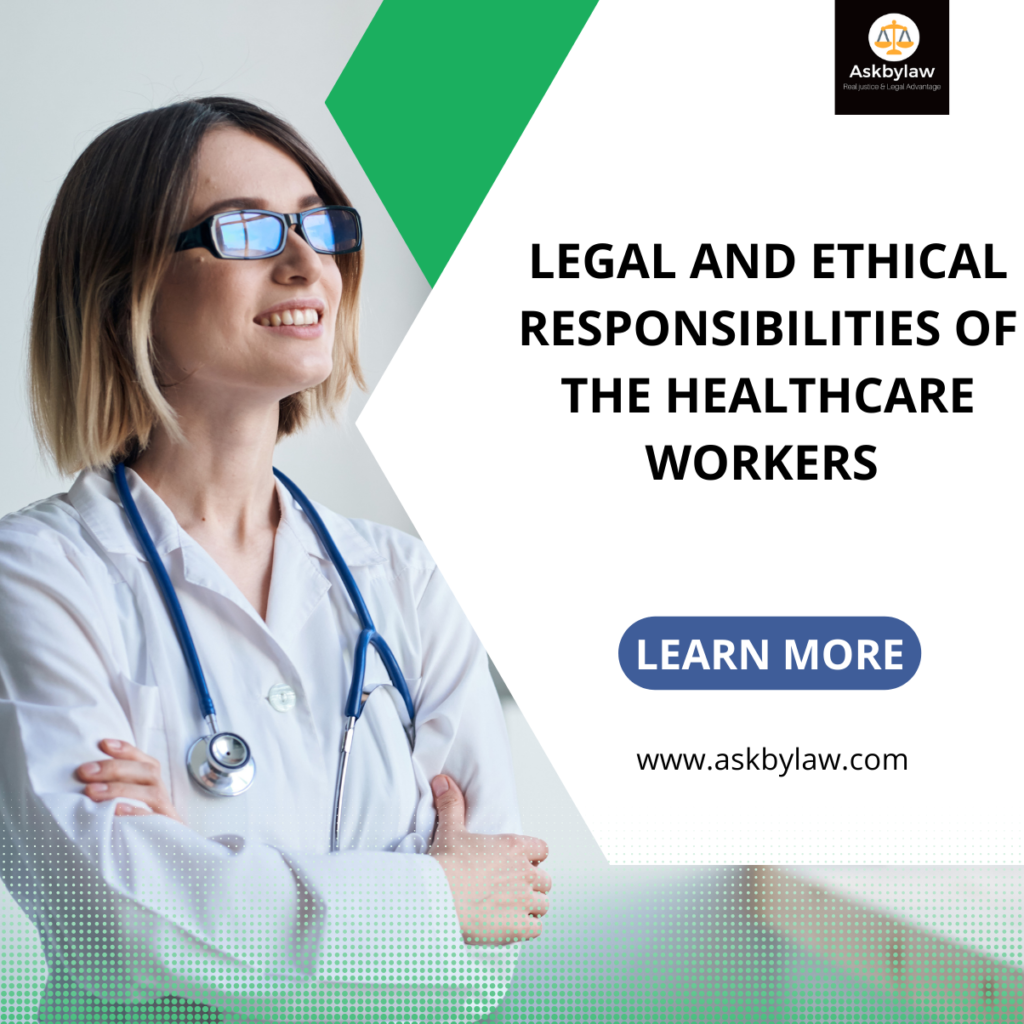
Legal and ethical issues are prevalent in healthcare. And Legal and ethical responsibilities of the healthcare workers and providers must be aware of them in order to provide safe and effective care while minimizing legal risks. Here are some common legal and ethical issues in healthcare.
Healthcare service providers have a legal and ethical obligation to gain informed concurrence from the case before administering any treatment. Doing so includes providing patients with information about the risks and benefits of treatment options, as well as any options.
Healthcare service providers must maintain patient confidentiality and cover patient sequestration. In particular, they cannot part take patient information without the case’s concurrence, unless needed to do so by law.
Healthcare providers can be held liable for medical malpractice if they fail to meet the norms of care anticipated in their profession. This results in damage or injury to the patient.
Healthcare providers must navigate complex legal and ethical issues when providing end-of-life care. Because they must ensure that patients receive appropriate care that aligns with their wishes and values.
Healthcare service providers should be aware of healthcare disparities. And work must be done to address it. Therefore, the case or health provider treatment difference may be grounded on race, race, gender, socioeconomic status, and other factors that affect access to care and health issues.
Healthcare service providers may face ethical dilemmas when allocating limited resources. Describe as organs for transplant or during an epidemic when hospitals have limited beds or ventilators. The legal and ethical issues in American healthcare are complex and multifaceted. Also, healthcare providers must navigate these issues to give safe and effective care while maintaining the loftiest norms of professionalism and ethical conduct.
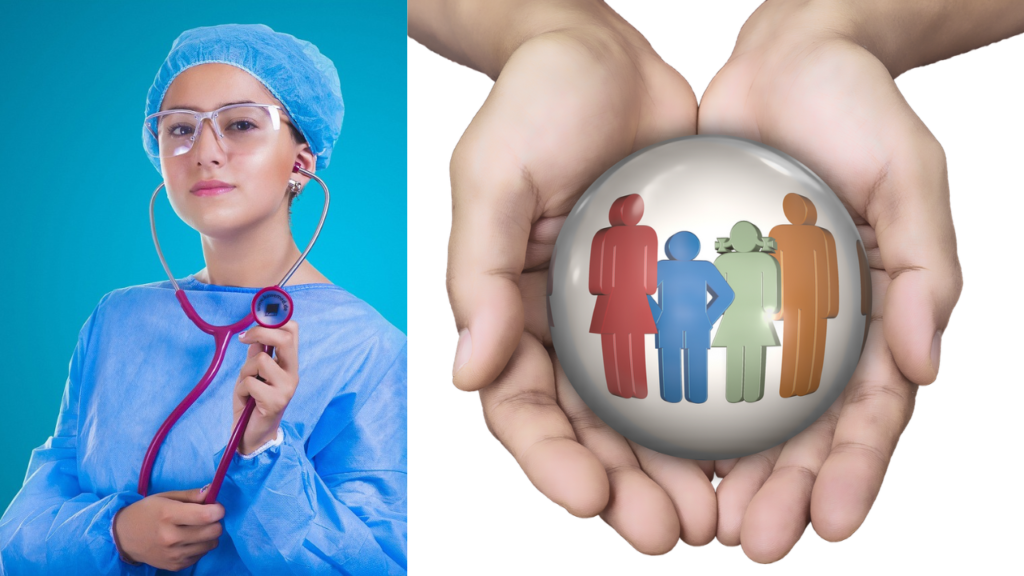
Healthcare workers or health service providers don't only have legal and ethical liabilities, but also ethical liabilities in their profession. Any ethical obligation refers to the duty of healthcare workers to act in the stylish interest of their cases and to do no detriment. One of the main ethical liabilities of healthcare workers is to prioritize the well-being of their cases above their own interests. They must put the requirements of their cases first, indeed if it means making particular offerings. Another ethical responsibility of healthcare providers is to ensure that they give cases with accurate and unbiased information to help them make informed opinions about their healthcare. Alternatives should be handed in. Healthcare providers have an ethical responsibility to admire the autonomy and quality of their cases. Healthcare providers should treat their cases with compassion, empathy, and respect and ensure that they admit care that aligns with their values and beliefs. Healthcare providers have an ethical responsibility to advocate for their cases and ensure they admit the care they need. Healthcare providers should be apprehensive of the social determinants of health that may affect the well-being of their cases and work to address these issues. Or the ethical scores of health care providers taking them to act in the stylish interests of their cases and to admire their autonomy and quality and advocate for their well-being. And by fulfilling these ethical scores, healthcare workers can give compassionate and patient-centered care. That promotes better health issues for everyone.

Compliance in the healthcare industry follows a wide manual of practices and implements federal and state rules. like the privacy of patients, protection of patient data, etc.

A. Preliminary care B. Secondary care and 3. Tertiary care main areas of helathcare

1. Follow written policy and procedure
2. Hiring compliance authority and compliance committee
3. Give effective training, education, and practice compliance to the staff and doctor
4. Take periodic or daily observation and audit of staff behavior
5. Strictly follow guidelines for patient and public
6. Create an effective communication system
7. Immediately handle medical issues by undertaking corrective action
The above discussion concludes by telling you. The legal and ethical responsibilities of healthcare workers are important to ensure that patients receive safe, effective, and ethical care of the patient. These responsibilities of yours are established by laws, regulations, and ethical guidelines. These rules must be strictly followed by healthcare workers. By following the guidelines, healthcare workers can build trust and establish strong relationships with their patients. This behavior is essential to promote good patient health outcomes.
In addition, healthcare workers are also liable for maintaining the highest standards of professionalism and ethical conduct. Healthcare workers must provide compassionate care to their patients to the respecting their rights and dignity. Healthcare workers need to be knowledgeable, competent, and ethical in their practice.
It is more important than ever for healthcare workers in any country to stay up to date with the latest legal and ethical guidelines and principles. Failure to follow them can increase the risk of legal and ethical issues, harming both patients and healthcare workers while providing the best possible care to their patients.
In short. Healthcare workers are responsible for upholding the highest standards of legal and ethical conduct in their practice. So that they can contribute to a better healthcare system. It can also promote better health outcomes for everyone. And it is imperative that healthcare workers continually educate themselves. And must stay abreast of the latest legal and ethical guidelines and principles to fulfill their responsibilities to their patients and the entire healthcare industry.
If you are healthcare diligent. It is important to stay updated on the latest legal and ethical developments in your field. You can do this by attending health-related continuing education courses, reading professional journals, and networking with other healthcare professionals. You can count on us to help you stay informed and ensure you are providing the best possible care to your patients.
About the Author: Viren Dave is the founder and partner of a law firm called Advocate Askbylaw. He specializes in enhancing engagement and user peace of mind by helping troubleshoot user legal queries. And, starting his career as a lawyer, he supports solving many legal issues in civil, criminal, property, consumer, family, and corporate law. You can find him on his blog or under mentioned social links:
As per the foundations of the Bar Council of Bharat (India), Advocate Viren.S.Dave isn't permissible to solicit work and advertise. By clicking the “Agree” button and accessing this web site (www.asklbylaw.com) the user absolutely accepts that you just Maineasure seeking info of your own accord and volition which no kind of solicitation has taken place by me.The info provided below this web site is exclusively accessible at your request for information functions solely. It mustn't be understood as soliciting or advert. Advocate Viren.S.Dave isn't accountable for any consequence of any action taken by the user hoping on material / info provided below this web site. In cases wherever the user has any legal problems, he/she altogether cases should obtain freelance legal recommendation.